D&D 5e races for player characters featured image is credited to Wizards of the Coast in the book Strixhaven: Curriculim of Chaos.
Disclaimer: This article contains affiliate links that add gold to our coffers. Support our small business by utilizing our Amazon Affiliate links!
With the myriad of character options like classes, feats, multiclassing, and background, considering which playable race to build from can be daunting. This guide to Dungeons and Dragons 5th Edition races will help provide you with a basic overview of each playable race, along with some inspiring ideas for background-building and optimization. We’ll help you select your lineage from D&D 5e races available for player characters.
Allocate Your Ability Score Boosts: A Note on Tasha’s Cauldron
Due to the recent book release of Tasha’s Cauldron of Everything, a player now has the ability to switch out any ability score increase given by their race, along with languages and skill proficiencies such as tools, weapons, and armor. With this in mind, players now have a wider range of choices per race.
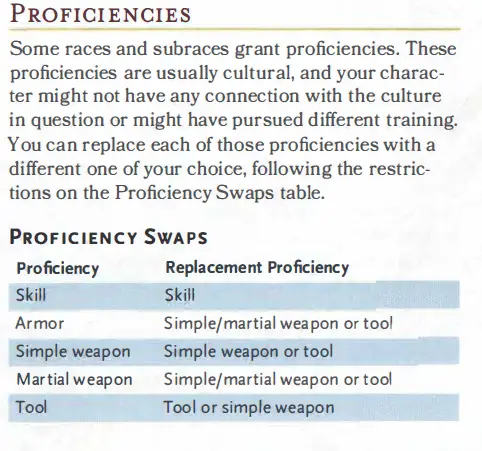
The Obsolescence of Alignments
Though this article will reference alignments as written in published manuals, please note that Wizards of the Coast is removing alignment as a metric for character creation, as all sentient and intelligent creatures are nuanced in their nature or nurture. When building your own character, decide for yourself how your race’s history and customs affect your goals and moralities.
Jump to and Explore a D&D Race
Aarakocra
Aasimar
Autognome
Bugbear
Centaur
Changeling
Custom Lineage
Dhampir
Dragonborn
Dwarf
Elf
Fairy
Firbolg
Genasi
Giff
Gith
Gnome
Goblin
Goliath
Grung
Hadozee
Half-Elf
Half-Orc
Halfling
Harengon
Hexblood
Hobgoblin
Human
Kalashtar
Kenku
Kobold
Leonin
Lizardfolk
Locathah
Loxodon
Minotaur
Orc
Owlin
Plasmoid
Reborn
Satyr
Shifter
Simic Hybrid
Tabaxi
Thri-kreen
Tiefling
Tortle
Triton
Vedalken
Verdan
Viashino
Warforged
Yuan-Ti
D&D 5e Races
These are the playable races of D&D 5e in alphabetical order. We’ve included each lineage’s lore, features, and game commentary to help you select a race for your next D&D character! Our list covers all officially published races (tell us if we missed any) plus several play-testable races from Unearthed Arcana releases.
Aarakocra
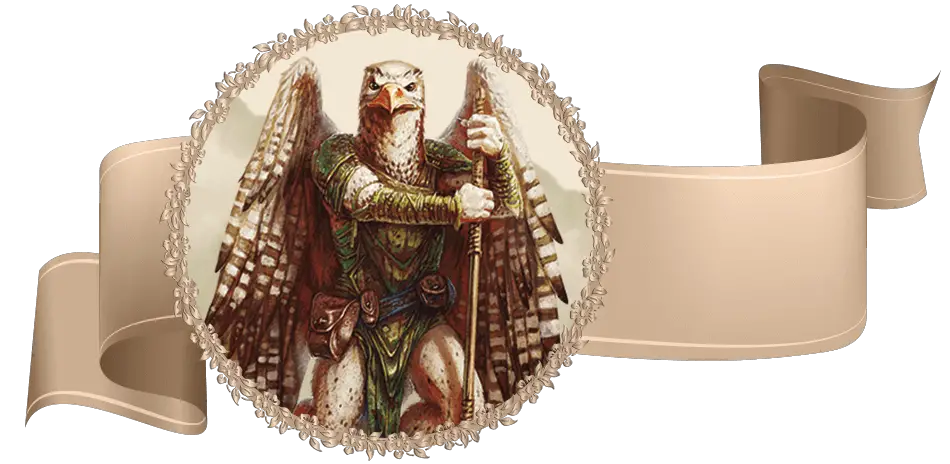
Racial Traits: Medium-size, Flight, Talons, Wind Caller
Birdfolk from the Elemental Plane of Air, Aarakocras are often travelers, expats, refugees, or adventurers. Resembling humanoids in their stature and bipedal movements, they also gain the benefits of a flying speed, slashing talons, and an understanding of the Aarakocra as well as the Auran tongue and writ.
While maturing around age 3, this race only lives around 30 years before death. Often claustrophobic and keen on sky travels, Aarakocras employ combat tactics from a distance and above the battlefield.
A player can find the updated stats for the Aarakocra in Mordenkainen Presents: Monsters of the Multiverse.
Flutes’ Lineage Analysis: Aarakocra
That lifespan is rough, but the flying speed is insane! That’s about all I have to say about these birds. They don’t interest me, and their flight can be problematic for many DMs to adapt to.
Aasimar
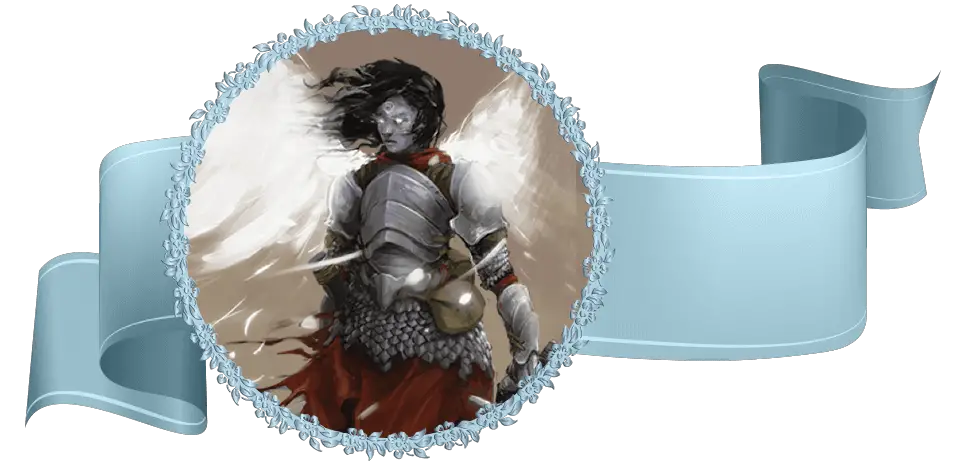
Racial Traits: Charisma +2, medium-size, Darkvision, Healing Hands, Light Bearer, Celestrial Revelation
A player can find the updated stats for the Aasimar in Mordenkainen Presents: Monsters of the Multiverse.
As descendants of Humans and often Celestials, Aasimar reflect the light and pure good of the divine realm. This goodness is often signified by a celestial mark on their bodies and their undeniable beauty. Though some more closely resemble human-like Tieflings, Aasimars often have pupil-less white or golden eyes and luminescent hair and display a uniquely sober nature.
From Volo’s Guide to Monsters, we learn that while some Aasimars become outcasts and fall from the light, these beings are typically good-aligned. As radiant energy shines through the darkness, Aasimars have darkvision, resistance to necrotic and radiant damage, abilities to heal, and proficiencies with the Celestial language.
Variants include Protector, Scourge, and Fallen. Protector Aasimars unleash shimmering energy that causes wings to sprout from their backs, enabling the character to fly for 1 minute and deal radiant damage. Scourge Aasimars risk internal combustion with their divine light and shed bright light from themselves for 1 minute while shrugging off radiant damage. Fallen Aasimars reroute their light to darkness and sprout skeletal flightless wings while frightening their foes for 1 minute.
While this race has particular flavors not suited to all players, there are many great benefits and playability features to the Aasimar race.
Aasimar Subraces:
- Fallen (VGtM): +1 Strength, Necrotic Shroud
- Protector (VGtM): +1 Wisdom, Radiant Soul
- Scourge (VGtM): +1 Constitution, Radiant Consumption
Flutes’ Lineage Analysis: Aasimar
One of my favorite details about Aasimar resides in their lore. Volo’s says an Aasimar is often guided by dreams in their youth, and a divine emissary (like a Deva) may visit and communicate with them. Their lineage also makes Aasimar perfect candidates for prophecies. Volo’s also includes a sidebar guide for light ideas to create angelic guides for Aasimar characters. This can give DMs a lot to work with!
Each subrace comes with a kind of transformation. The base class has built-in healing and resistance to both necrotic and radiant damage. Very cool!
Autognome
Racial Traits: Small-sized, creature type Construct, Armored Casing, Built for Success, Healing Machine, Mechanical Nature, Sentry’s Rest, Specialized Design
From Spelljammer: Adventures in Space, Autognomes may catch a player’s interest solely because it counts as a construct creature type. Anything other than a humanoid comes with new considerations, such as which spells can affect it. Several Autognome features address this by giving them a method to be healed in ways that constructs are usually incompatible with.
They can resist poison and paralysis, remain conscious during “sleep,” gain tool proficiencies, and can buff their d20 rolls with a d4. Oh, they are naturally armored, essentially giving them permanent Mage Armor while they’re not wearing armor.
Bugbear
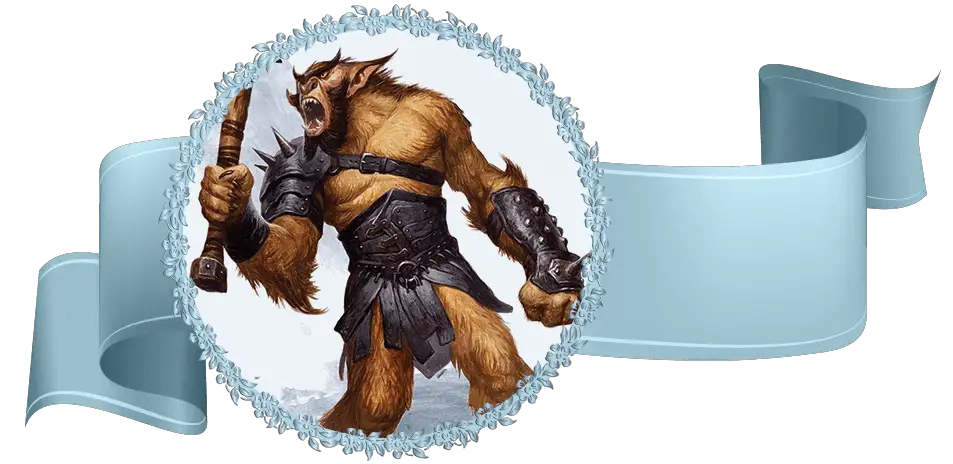
Racial Traits: Humanoid (goblinoid), medium-size, Darkvision, Fey Ancestry, Long-Limbed, Powerful Build, Sneaky, Surprise Attack
A player can find the updated stats for the Bugbear in Mordenkainen Presents: Monsters of the Multiverse.
Monstrous creatures and stellar creatures of the night, Bugbears oscillate between their savagery and their lethargy. Related to Hobgoblins but distinctly larger and more powerful, Bugbears utilize their brutish temper, long limbs, and muscular builds to accomplish their goals.
Typically chaotic evil, a Bugbear can overcome the worst of their nature to gain reward from the virtue of heroic acts. From Volo’s Guide to Monsters, we read that Bugbears have Darkvision, are proficient in Stealth, and more readily surprise unaware targets. With these abilities to their advantage. Bugbears are an often underutilized yet intriguing race choice.
Flutes’ Lineage Analysis: Bugbear
These sneaky bloaks are loaded with racial features. They can sneak well and wallop foes with their extra damage in ambushes. Their long arms are fantastic for theory-crafting interesting character builds as your melee attacks gain five feet of extra reach.
Powerful Build is another feature that makes Bugbears excellent at putting Strength stats to good use. Not many DMs that I’ve seen have cared about carrying capacities, but if I like to play with those rules to make Strength relevant. This is a good race for your character!
Centaur
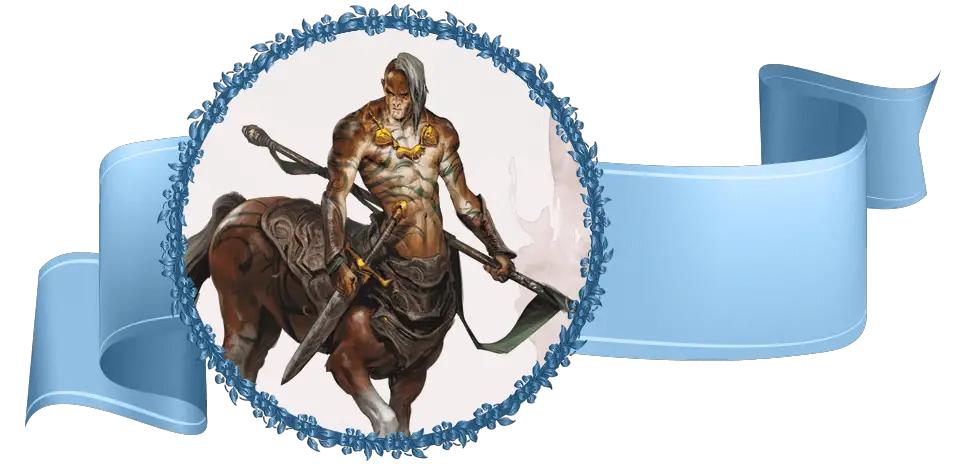
Racial Traits: Medium-size, Fey, Charge, Equine Build, Hooves, Natural Affinity
A player can find the updated stats for the Centaur in Mordenkainen Presents: Monsters of the Multiverse.
As a hooved sentient half-humanoid, a Centaur lives a solitary life or in small tribes within temperate forests. Proud and peaceful, Centaurs can be moved to violence, especially when influenced by strong drink. When struck by wanderlust, Centaurs become roamers who value their freedom to explore.
In Mythic Odysseys of Theros, we discover that Centaurs are generally neutral, age the same as Humans, have Fey ancestry, and walk slightly faster than normal humanoids. With their ability to expeditiously charge as a bonus action against a target, their natural melee hooves weapons, and larger equine physique for weight capacity, the Centaur adds unique playable options to the table.
Centaurs were also published in Guildmasters’ Guide to Ravnica.
Flutes’ Lineage Analysis: Centaur
It’s cool that WotC took a chance and made Centaurs Fey instead of humanoid for a playable race. Centaurs must have been tricky to design as a playable race.
While clumsy at climbing, Centaurs do well when they can charge their enemies. They also have additional skills available. I don’t personally get excited about playing a Centaur, but it’s a cool lineage option. I think you could have fun with a small race riding on the back of their Centaur teammate.
Changeling
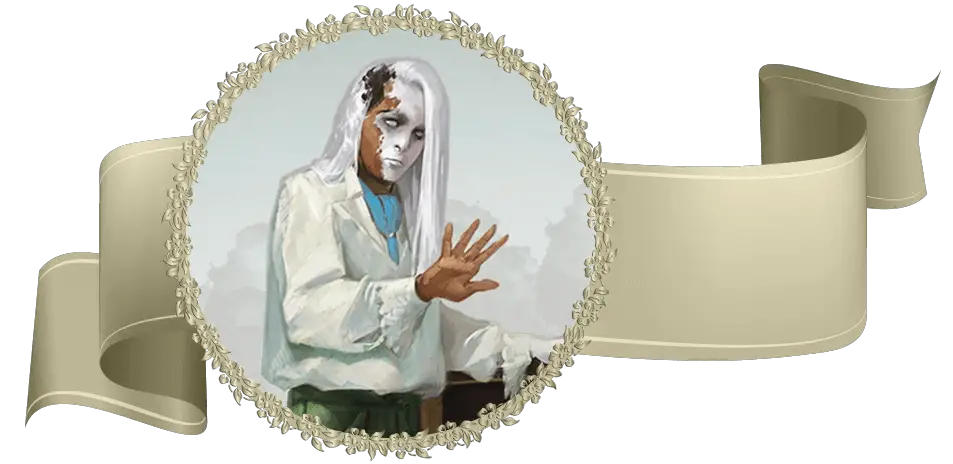
Racial Traits: Fey creature type, medium or small sized, Changeling Instincts, Shapechanger
A player can find the updated stats for the Changeling in Mordenkainen Presents: Monsters of the Multiverse.
The Changeling race comes to us from the Eberron setting, and they are a race that should be disruptive to any setting if their population is noticable. Changelings can shift their appearance and form with a thought.
They’re prone to artistic expression of their emotions, and they may use their bodies as canvases for their artistic expression. A persona adopted quickly with no history is referred to as a mask. Changelings may develop personas for their masks as they use them and feel them out. Your Changeling character may assume a new form depending on the situation in it’s in, like a mood ring or comfort persona.
The ability to change appearance is a tool of spies and criminals, too. Because of the clandestine ways their natural shapeshifting can be used, Changelings may face suspicion if their lineage is known.
A key consideration for a Changeling character is their relationships with other people and other Changelings. They don’t need to be secretive about their identities as shapeshifters, but that may be the case. Changeling communities may share personas between them as they fill different roles. The example given in their description is for a healer named Tek. Whoever is acting in a medical capacity will take the form of Tek and express themselves with that persona.
Their natural form is pale and featureless. Their eyes are colorless and their hair is ghostly white. Changelings may refer to non-shapeshifters as “single-skins” when speaking with other Changelings.
A Changeling has a true name that is simple and monosyllabic (one syllable). This makes it inevitable for Changelings to share true names, but they will have expanded names to differentiate them. One Changeling’s true name may be Jin, but their full name is Jin-with-the-deep-green-eyes. Gender is seen as fluid to Changelings.
Flutes’ Lineage Analysis: Changeling
Playing as a Changeling can be game-defining. You can transform or embrace your playstyle to the fullest if you gain the freedom to play games with people using your appearance. If you’re an instigator who enjoys making big choices and seeing the results of your choices, Changelings are great for you. I might not recommend a Changeling in rural settings where you won’t be interacting with other humanoids in meaningful ways, so keep that in mind.
Custom Lineage
Racial Traits: +2 to an ability score of your choice, small/medium-size (your choice), Feat, Variable Trait
Custom Lineage has no lore behind it because it’s whatever you want it to be! You can find Custom Lineage described in the character options of Tasha’s Cauldron of Everything.
Flutes’ Lineage Analysis: Custom Lineage
This race was gifted to the community for (I believe) two reasons: allow players to make their own races and lineages with less mechanical limitation, and encourage players to flavor their character’s lineage as they please. I also believe the game designers sought to emulate the popularity of the Variant Human lineage and its feat at level one.
Custom Lineage is a common option for power gamers, but it can be used to create interesting races for your setting (DMs) or characters (players). Check it out if no other lineage is calling out to you at character creation.
Dhampir
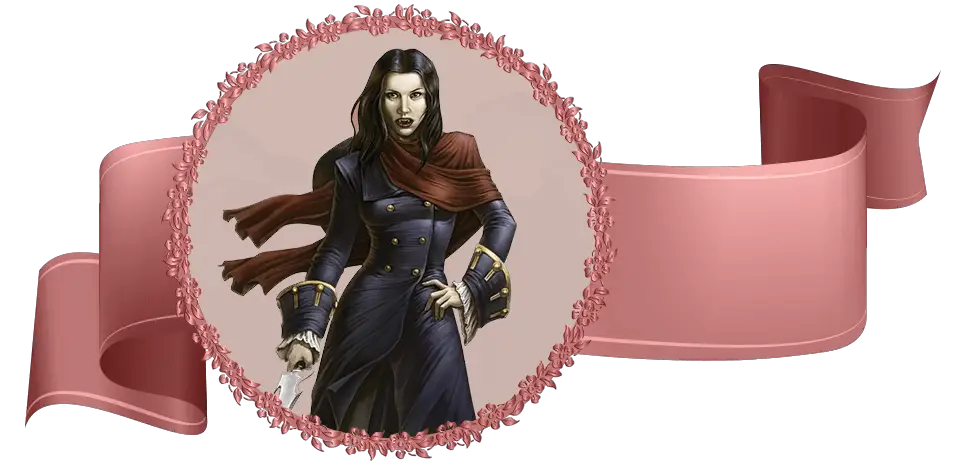
Racial Traits: +2 and +1 to two different ability scores or +1 to three ability scores, Ancestral Legacy, medium/small size (your choice), 35 speed, Ancestral Legacy, Darkvision, Deathless Nature, Spider Climb, Vampiric Bite
The Dhampir is a lineage found within Van Richten’s Guide to Ravenloft. Playing a Dhampir involves a character that is between life and death and is tested by intense hunger. You’re basically a vampire-ish person who is not actually a vampire. The Domains of Dread are poised to passively create Dhampirs, so it’s easy to create or become a Dhampir character if you’re playing in the Domains of Dread.
Dhampirs have a unique understanding of undead monsters because of their own natures. They may choose to hunt such monsters as they seek danger or attack the projections of their inner monstrous tendencies.
You can choose from various types of hunger for your Dhampir character, so you don’t have to be a typical blood-hungry vampire-kin. Becoming a Dhampir can happen in a variety of ways, including dark bargains, necromantic backfires, parasites, or mysterious encounters.
Flutes’ Lineage Analysis: Dhampir
Dhampirs are an innovative addition to D&D 5e. You can start as a Dhampir or become one, and the mechanics to do either are well-designed. I love anything with Spider Climb, and Dhampirs always have it. The other features are fine, but Spider Climb is king to me. My favorite type of hunger for a Dhampir is psychic energy as I find that intriguining, like the antagonists of the book/movie Doctor Sleep.
Dragonborn
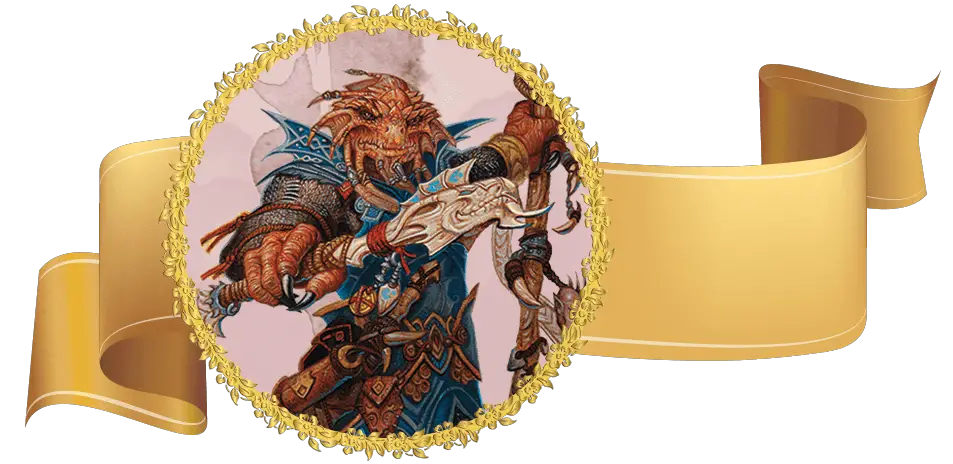
Racial Traits (PHB): Strength +2, Charisma +1, medium-size, Draconic Ancestry, Breath Weapon, Damage Resistance
Racial Traits (Fizban’s): +2 and +1 to different stats of your choice (or +1 to three stats), medium-size, choose a dragon type for your ancestry (see subraces below)
Originally hatched from a golden egg of a dragon, this hybrid race showcases some of the greatest features of both dragons and humanoids. Growing at the same pace as Humans, Dragonborn commit to either the light of Bahamut, the dark of Tiamat, the neutral gray of Chronepsis, or the wholeness of Io, who represents all alignments together.
Unlike their dragon ancestors, Dragonborn rarely fly, unless a player peeks at the Gem Dragonborn variants from Fizban’s Treasury of Dragons. From their lineage, however, a Dragonborn knows Draconic and bears a specific damage type for their Breath Weapon: Acid, Lightning, Fire, Poison, Cold, Force, Radiant, Psychic, Thunder, or Necrotic. Dragonbreath from the Player’s Handbook was improved upon in Fizban significantly, raising the Dragonborn to among the favorites of playable races in Dungeons and Dragons.
Between the standard Dragonborn; Draconblood and Ravenite from Explorer’s Guide to Wildemount; and Chromatic, Gem, and Metallic Dragonborn from Fizban’s Treasury of Dragons, Dragonborn abilities range from damage resistances to darkvision, vengeful reactions to magical affinity, telepathy to a boosted Breath weapon, and beyond.
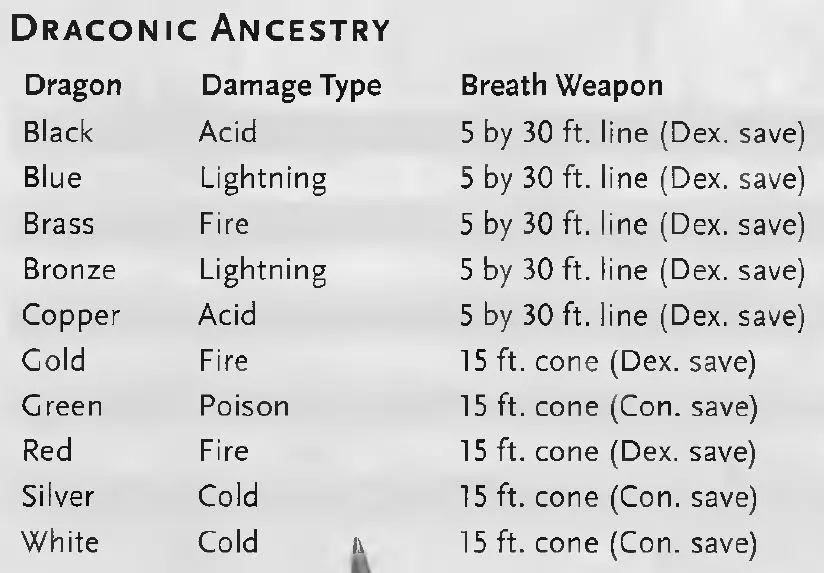
Dragonborn Subraces (Fizban’s):
- Chromatic Dragonborn: Chromatic Ancestry, Breath Weapon, Draconic Resistance, Chromatic Warding
- Black – Acid
- Blue – Lightning
- Green – Poison
- Red – Fire
- White – Cold
- Metallic Dragonborn: Metallic Ancestry, Breath Weapon, Draconic Resistance, Metallic Breath Weapon (Enervating Breath, Repulsion Breath)
- Brass – Fire
- Bronze – Lightning
- Copper – Acid
- Gold – Fire
- Silver – Cold
- Gem Dragonborn: Gem Ancestry, Breath Weapon, Draconic Resistance, Psionic Mind, Gem Flight
- Amethyst – Force
- Crystal – Radiant
- Emerald – Psychic
- Sapphire – Thunder
- Topaz – Necrotic
Racial Feats for Dragonborn:
If you choose this race, consider looking at feats specifically designed for Dragonborn, including Dragon Fear and Dragon Hide from Xanathar’s Guide to Everything.
Flutes’ Lineage Analysis: Dragonborn
Fizban’s Treasury of Dragons revitalized the Dragonborn. I’ll never recommend playing the PHB Dragonborn because they’re such a weak lineage, but the new ones are fantastic! I especially like the Gem Dragonborn with its interesting breath weapon and other features. Despite the PHB Dragonborn’s weak features, players have chosen to often play as Dragonborn characters. This is a tribute to the cool factor of the race, so I am pleased that WotC revamped them in FToD.
Dwarf
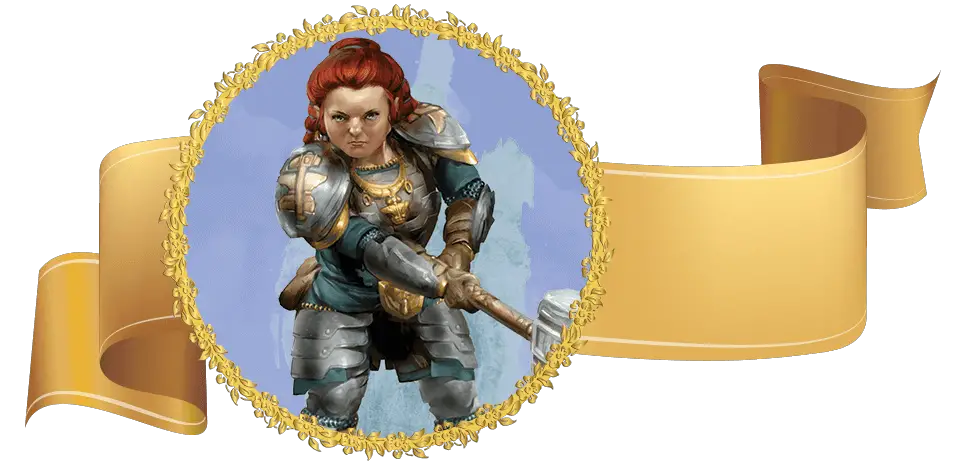
Racial Traits: Constitution +2, medium-size (25 speed), Darkvision, Dwarven Resilience, Dwarven Combat Training, Stonecunning
United by their disgust of foul goblins and brutish orcs, their affinity toward sturdy mining picks and forging hammers, and ancient kingdoms among the rich mountains, Dwarves are stalwart folk of deep tradition and stonelike strength. While they may appear mature at the same rate as a human adult, their longevity of a 350-year lifespan disguises their adolescence until they reach 50 years of age.
Believers of law and order in society, most Dwarves are good-aligned with a sense of righteous justice and fairness. Like the stone they cut, Dwarves are stout and resilient, standing at about 4 feet tall and trained for heavy combat.
As masons of the mountains, Dwarves gain many tool/weapon proficiencies as well as knowledge of stonework and its history. They also have darkvision accustomed to living underground. Hill Dwarves have resilience in hit points; Mountain Dwarves are comfortable in armor; the Duergar of Sword Coast Adventurer’s Guide have improved Darkvision, advantage against illusions and some enchantments, can cast a few spells, but grow weary in the sunlight.
From Eberron: Rising from the Last War, the Mark of the Warding Dwarves display remarkable intelligence and intuition, as well as gain some spellcasting abilities concerned with warding. Free from Wizards of the Coast, the Plane Shift: Kaladesh Dwarves are Artisan Experts with expertise in ability checks of two artisan tools and proficient in history regarding their chosen craft. Whether you’re looking for an adept fighter, a skilled craftsman, or a race with rich lore and world-altering history, the Dwarf is a solid choice with many exciting elements.
A player can find the updated stats for the Duergar in Mordenkainen Presents: Monsters of the Multiverse.
Dwarf Subraces:
- Duergar (MoM): Strength +1, Superior Darkvision, Duergar Magic, Dwarven Resilience, Psionic Fortitude
- Hill (PHB): +1 Wisdom, Dwarven Toughness
- Mountain (PHB): +2 Strength, Dwarven Armor Training
- Kaladesh (Plane Shift)
Racial Feats for Dwarves:
If you choose this race, consider looking at feats specifically designed for Dwarves, such as Dwarven Fortitude or Squat Nimbleness from Xanathar’s Guide to Everything.
Flutes’ Lineage Analysis: Dwarf
Dwarves make for sturdy characters. Despite being medium-sized, their movement speed is merely 25 feet (I bet this will be changed in 2024). I prefer the Mountain Dwarf subrace when I’m not playing a class that already has medium or heavy armor proficiencies. The +2 to two stats is amazing, and gaining medium armor is superb for many unarmored classes.
Elf

Racial Traits: Dexterity +2, medium-size, Darkvision, Keen Senses, Fey Ancestry, Trance, (lots of Elf types with unique traits)
A long-lived magical race of beauty and agelessness, Elves grace ancient forests, silvery plains, and mountain vales. Communed with nature and moved by art, music, and magic, Elves revere freedom and self-expression in their gentle yet beautiful chaos. Slender and tall, and beings of the twilight forests, Elves are accustomed to seeing in the dark, resistant to magical charm or sleep, and highly perceptive and meditative.
The popular High Elf is of nobility: Sun, Moon, or Star. With an additional Wizard cantrip under their belt and training in a few weapons, this subrace is primed for adventure. Contrary to the High Elf, the Drow, or Dark Elf, from the Player’s Handbook has superior Darkvision, inherent magic, proficiencies with dextrous weapons, and a sensitivity to sunlight that dampens their abilities. Alternatively, Wood Elves stride through terrains like skillful trackers, with a sword or bow at their side.
From Mordenkainen’s Tome of Foes, the Feywild-native Eladrin are as transformative and wily as the lands they hail from. Associating with a preferred season, an Eladrin’s mood and personality shift with its nostalgia for a season, altering its inclinations as well as teleportation abilities. The Sea Elf longs for the wild allure of the tides and has proficiencies with oceanic weaponry. With swimming abilities and water breathing, Sea Elves communicate subtly with creatures of water. Finally, from this same manual, Shadar-Kai Elves are the shadow of the Eladrins. They are agents of the Raven Queen who flow from the Shadowfell in a state between life and death to do the bidding of their patron, devoid of emotion.
Hailing from Explorer’s Guide to Wildemount, the Pallid Elf has superior senses and a few innate spellcasting abilities (Light, Sleep, and Invisibility). The Eberron: Rising from the Last War Mark of the Shadow Elf gains bonuses to Stealth and Performance, as well as the ability to cast Invisibility once per long rest. Spellcasting features are expanded in this subrace.
Agile and swift, or methodical and moody, choosing the Elf race will allow players a range of playability that should suffice for any Class build.
A player can find the updated stats for the Eladrin, Shadar-kai, and Sea Elf in Mordenkainen Presents: Monsters of the Multiverse.
Elf Subraces:
- Astral (UA, may not function as a subrace): Astral Fire, Darkvision, Fey Ancestry, Keen Senses, Radiant Soul, Trance, Trance Proficiencies
- Drow (PHB): +1 Charisma, Superior Darkvision, Sunlight Sensitivity, Drow Magic, Drow Weapon Training
- Eladrin (MToF): +1 Charisma, Fey Step, different features based on Autumn, Spring, Summer, Winter
- Eladrin (DMG)
- Eladrin (MoM): Child of the Sea, Darkvision, Fey Ancestry, Friend of the Sea, Keen Senses, Trance
- High Elf (PHB): Intelligence +1, Elf Weapon Training, Cantrip, Extra Language
- Mark of Shadow Elf (ERftLW)
- Pallid Elf (EGtW)
- Sea Elf (MoM): Constitution +1, Sea Elf Training, Child of the Sea, Friend of the Sea
- Shadar-Kai (MoM): Constitution +1, Necrotic Resistance, Blessing of the Raven Queen
- Wood Elf (PHB): Wisdom +1, Elf Weapon Training, Fleet of Foot, Mask of the Wild
Racial Feats for Elves:
If you choose this race, consider looking at feats specifically designed for Elves, including Elven Accuracy, Drow High Magic, Wood Elf Magic, and Fey Teleportation from Xanathar’s Guide to Everything or Revenant Blade from Wayfinder’s Guide to Eberron.
Flutes’ Lineage Analysis: Elf
There is so much lore about Elves, particularly in Mordenkainen’s Tome of Foes. It’s a lot to take in. I recommend reading about Elves and absorbing the lore so you can roleplay while exploring how a long lifespan and expectation of reincarnation would affect your Elven PC. They’re not just slender, agile humans, so play them properly!
My favorite trait of the base Elf before subraces is the Trance. It’s extremely handy to take shorter long rests than the average character. The Elf subraces are cool. I particularly like how many of them gain a bonus action to teleport plus a bonus effect. This race has many options and can be very rewarding to play.
Fairy
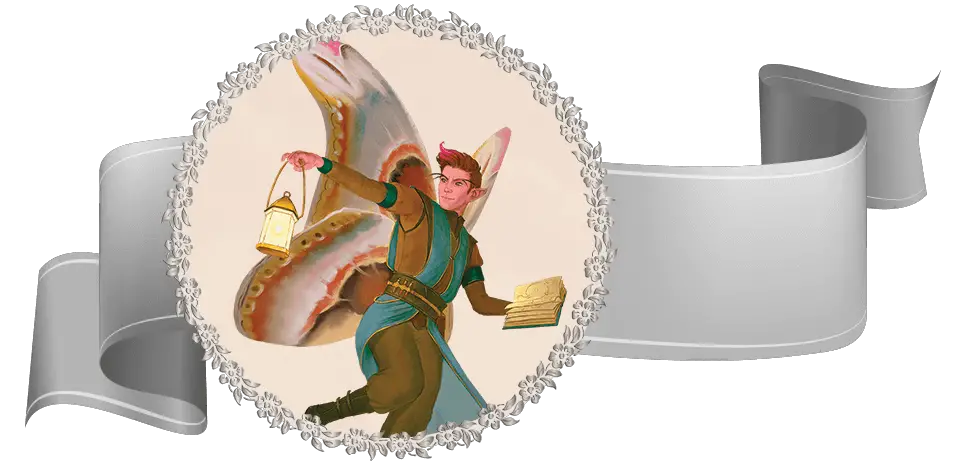
Racial Traits: +2 and +1 to different stats of choice, small-size, Fey, Fairy Magic, Flight
A player can find the updated stats for the Fairy in Mordenkainen Presents: Monsters of the Multiverse.
Ripe with Fey lore and mischievous revelries, the Fairy race is new to The Wild Beyond the Witchlight: A Feywild Adventure. Tricksters by heart with powerful magic, Fairies slip between realms for their wily-natured deeds. With an array of possible physical characteristics, all Fairies live about a century, are considered small-sized, and fly as well as walk.
With basic spells available like Druidcraft, Faerie Fire, and Enlarge/Reduce, Fairies make for a compelling race to play in a whimsy-filled campaign.
Flutes’ Lineage Analysis: Fairy
I appreciate that WotC is allowing races with flying speeds again, but with limitations on their flight. Fairies can’t fly while wearing medium or heavy armor, so there’s a healthy tradeoff. Like the Centaur, Fairies are classified as fey instead of humanoid. I applaud the designers for deviating from the humanoid-only design choices of prior race designs.
Fairies have useful innate spellcasting with Druidcraft, Faerie Fire, and Enlarge/Reduce. WotC allows new races to be more flexible with their ability score bonuses and the ability scores associated with their spellcasting. I believe this is a healthy update to their design philosophy, making the Fairy a solid race for your character.
Firbolg
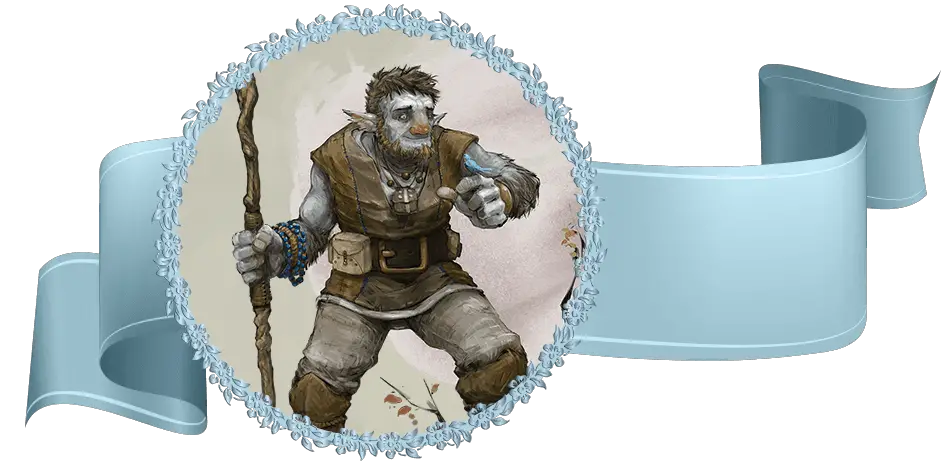
Racial Traits: Wisdom +2, Strength +1, medium-size, Firbolg Magic, Hidden Step, Powerful Build, Speech of Beast and Leaf
A player can find the updated stats for the Firbolg in Mordenkainen Presents: Monsters of the Multiverse.
Another race from Volo’s Guide to Monsters, these Fey half-giants exhibit tribal and druidic natures. Preferring solitude among harmonious woodlands, Firbolgs live for 500 years and reach adulthood around 30. Caretakers of nature, Firbolg are rarely evil and can speak to plants and beasts limitedly. With a few innate magic abilities like Detect Magic and Disguise Self, Firbolg can magically turn invisible for a turn and carry a heavier capacity with superior bear-like strength. They are also familiar with Elvish and Giant languages.
Flutes’ Lineage Analysis: Firbolg
The lore behind Firbolgs is fascinating. Their lore has evolved over the years and editions of the game, but they used to be giantkin who were “pickled” in the Feywild with fey energy to become what they are now.
Mechanically speaking, I don’t love Firbolgs. I think Detect Magic is overrated, so that doesn’t help my affection of the lineage. They get powerful build for their giant heritage (like Goliaths), which is cool. Talking with animals can be fun. I wish Hidden Step could be used more than once. It’s a good escape mechanism, but it can be used offensively to become unseen before making an attack with advantage. It’s strange to me that Firbolgs didn’t receive a similar spellcasting errata to the Triton. Firbolgs can cast Detect Magic or Disguise Self, but not both, once each long rest.
Genasi
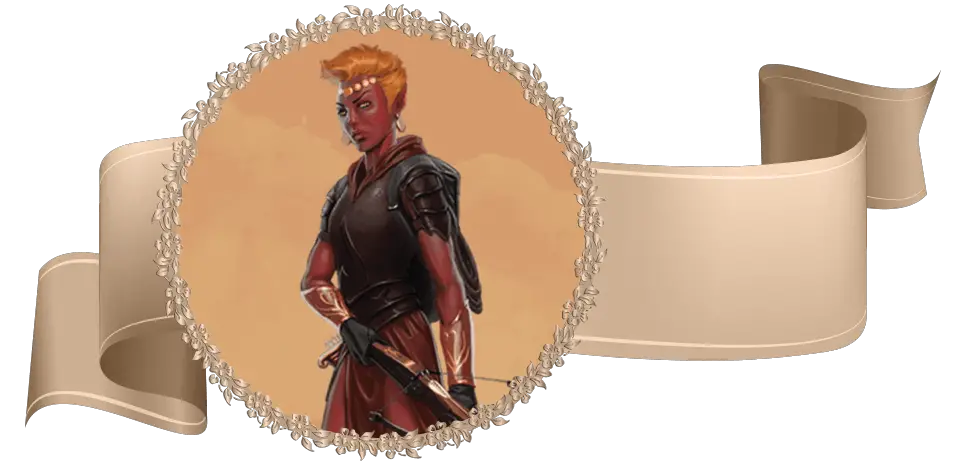
Racial Traits: Constitution +2, medium or small size, Air/Earth/Fire/Water Subrace Traits
A player can find the updated stats for the Genasi in Mordenkainen Presents: Monsters of the Multiverse.
Planetouched element-based beings, Genasi are a classification of humans with the heritage of planar beings, often having ancestry of a genie, dao, djinn, efreet, marid, or jann. Among the elements, lineage may associate with air, earth, fire, or water. While their appearances may differ from Genasi to Genasi, physical features and characteristics often resemble their elemental influence.
With the power of the planes in their veins, Genasi live slightly longer than humans, are seen as independent and neutrally aligned, and their knowledge includes the Primordial language. Though they all share similarities, Genasi are heavily influenced by their elemental blood.
Air Genasi descend from djinn and display wispy characters and a quick-changing temperament like a rolling storm. With abilities to indefinitely hold their breath and levitate after each long rest, Air Genasi excel in many campaigns.
Descending from the brutal dao, Earth Genasi are grounded and thoughtful. With idiosyncrasies like mud-clung clothes, dusty auras, or polished gem-like features, Earth Genasi are diamonds in the rough. They can skirt through difficult terrain without additional movement and Pass without Trace each long rest period.
Volatile and eruptive, Fire Genasi share the sharpness and emotional excitability of their efreet ancestors. Taking pride in their distinct appearance, Fire Genasi often adorn fiery hair and ember eyes. This subrace gains the benefits of Darkvision, fire resistance, and an innate ability to cast a few fire-based spells.
Finally, with depths of emotion like the vast ocean, the Water Genasi are a free and enigmatic subrace. With constantly moist skin and hair, overlarge seaglass eyes, and features reminiscent of a rolling tide, Water Genasi are resistant to acid damage, can breathe both air and water, swim easily, and can cast several water spells inherently.
Genasi abilities can be found in the Elemental Evil Player’s Compendium.
Genasi Subraces:
- Air: Dexterity +1, Unending Breath, Mingle with the Wind
- Earth: +1 Strength, Earth Walk, Merge with Stone
- Fire: Intelligence +1, Darkvision, Fire Resistance, Reach to the Blaze
- Water: +1 Wisdom, Acid Resistance, Amphibious, Swim, Call to the Wave
Flutes’ Lineage Analysis: Genasi
They’ve been around since the early days of 5e, but they’ve aged fairly well. Players love the colorful Genasi options. Even the Earth Genasi has grown in popularity after its initial lack of adoration (Pass without Trace is a really good spell). Genasi characters have interesting spells, resistances, and survival options. I highly recommend trying a Genasi, especially if you are playing a themed character that fits.
Giff
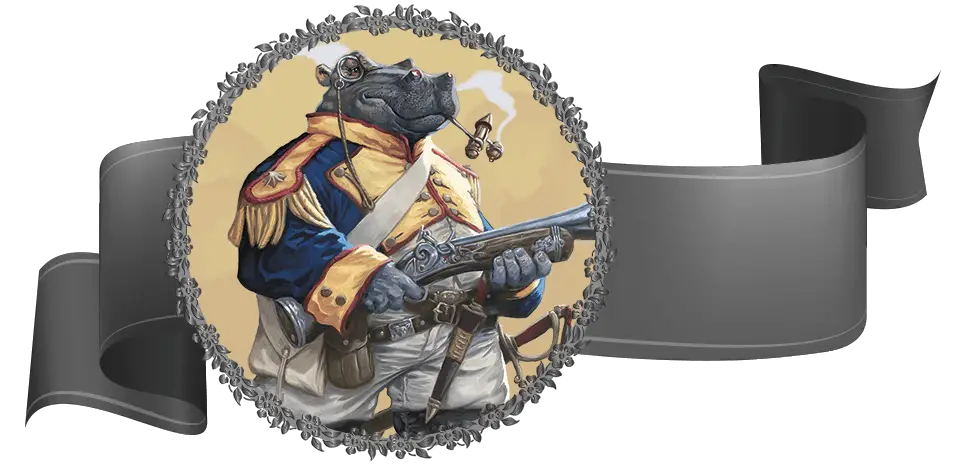
Racial Traits: Medium-sized, swimming speed, Astral Spark, Firearms Mastery, Hippo Build
From Spelljammer: Adventures in Space, the Giff receive divine knowledge about firearms from their creator god (weird, but that’s what their entry says). They’re built for blasting. Their ability to heft things as if they are a size larger is helpful for manning cannons and running ships. They’re a solid race for anyone, but especially if you’re allowed to use firearms.
Gith
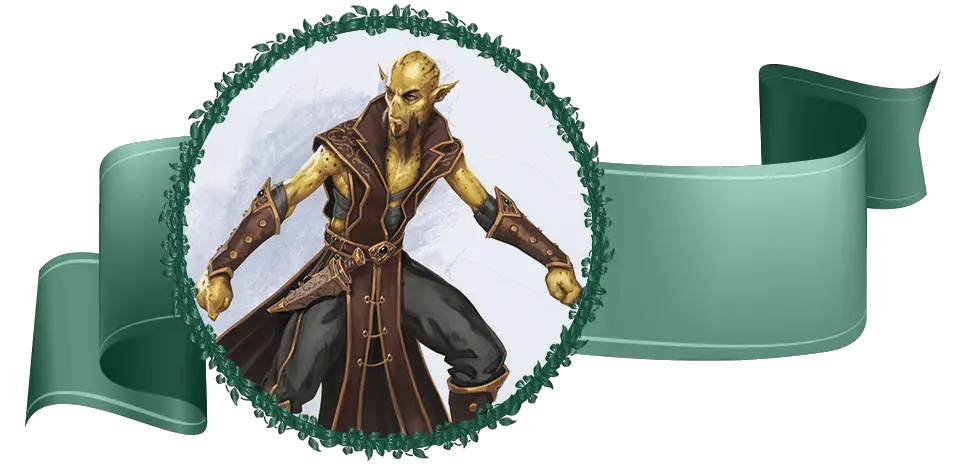
Racial Traits (Githyanki): Medium-size, Astral Knowledge, Githyanki Psionics, Psychic Resilience
Racial Traits (Githzerai): Medium-size, Githzerai Psionics, Mental Disciple, Psychic Resilience
A player can find the updated stats for the Gith in Mordenkainen Presents: Monsters of the Multiverse.
With a rich history and lore, Gith generally describe two distinct cultures separated by enmity for each other: the Githyanki and the Githzerai. Where the Githyanki take up sword to fight, the Githzerai hone their intelligence to cleverly and strategically preserve themselves. Once enslaved by the illithids, Gith share physical traits, which are similar in stature and length to Humans, though slightly leaner and taller. Nevertheless, the two subraces could not differ more in features and motivations.
Typically lawful evil, aggressive, and servants of the lich queen Vlaakith, Githyanki are chaotic and prolific fighters with bounties of knowledge, a skill proficiency, and a language choice. With proficiencies in armor and weapons, the Githyanki also employ Mage Hand, Jump, and Misty Step to fulfill their goals.
Contrastingly, Githzerai commit to psychic training and tend to be lawful neutral. With their firm mental control, Githzerai gain advantage against being charmed or frightened and have the ability to cast Mage Hand, Shield, and Detect Thoughts.
From the two contrasting subraces available, the Gith race is an excellent choice rich with motivations, character backstory opportunity, and effective playable abilities.
Gith abilities can be found in Mordenkainen’s Tome of Foes.
Gith Subraces:
- Githzerai: Wisdom +2, Mental Discipline, Githzerai Psionics
- Githyanki: +2 Strength, Decadent Mastery, Martial Prodigy, Githyanki Psionics
Flutes’ Lineage Analysis: Gith
The Githyanki and Githzerai are both strong races. They gain some of the best spells to have up your sleeve in the game. Gith characters gain proficiencies and defenses that are thematic and useful. Coming from Mindflayer slavery is an interesting backstory to drive the Gith culture. I highly recommend exploring how this history affects your character.
Gnome
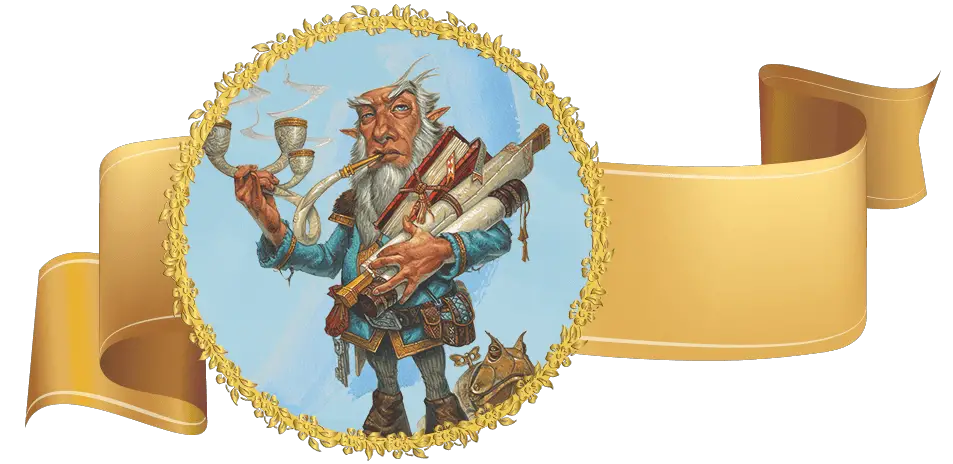
Racial Traits: Intelligence +2, small-size (25 speed), Darkvision, Gnome Cunning
Sometimes known as the Forgotten Folk, Gnomes are small but busy half-sized humanoids who thrive at cultivating tight communities yet relish in the delights of life, adventure, invention, and celebration. Reaching lengths of sometimes 500 years of age, a Gnome is generally good-natured and lawful, and often found in intelligent professions, such as scholar, inventory, sage, and builder. Gnomes who find themselves a bit more wild are tricksters and mostly harmless.
Living in hills, burrows, and warrens in the plains and forests, Gnomes have superior vision accustomed to the dark and a savvy intelligence against some magics. Forest Gnomes cast wily illusions and communicate with their forest beasts. Rock Gnomes are proficient artificers who tinker and create. Deep Gnomes, or Svirfneblin, from the Elemental Evil Player’s Compendium have improved Darkvision and advantage to Stealth in rocky terrain.
From Eberron: Rising from the Last War, the Mark of Scribing Gnome is a skillful scribe with proficiencies in calligraphy, basic spellcasting regarding messages, and an increased spell list. From these Gnome subclasses, a player may surely find a merry niche for their adventuring character.
A player can find the updated stats for the Deep Gnome (Svirfneblin) in Mordenkainen Presents: Monsters of the Multiverse.
Gnome Subraces:
- Forest (PHB): Dexterity +1, Natural Illusionist, Speak with Small Beasts
- Rock (PHB): Constitution +1, Artificer’s Lore, Tinker
- Deep/Svirfneblin (MToF): 30 speed, Darkvision, Gift of the Svirfneblin, Gnomish Magic Resistance, Svirfneblin Camouflage
Racial Feats for Gnomes:
If you choose this race, consider looking at feats specifically designed for Gnomes, including Fade Away and Squat Nimbleness from Xanathar’s Guide to Everything. From Mordenkainen’s Tome of Foes, see Svirfneblin Magic.
Flutes’ Lineage Analysis: Gnome
Gnomes are difficult to trick with mental saving throws since they have advantage on such rolls. However, they’re outclassed by the Yuan-Ti Pureblood in regards to Magic Resistance (no to mention poison immunity). Having said that, Gnomes make naturally happy-go-lucky characters with good natures and strong hearts.
Deep Gnomes make potent illusionists if you take their optional feat, Svirfneblin Magic. Forest Gnomes make good illusionists, too. Rock Gnomes can be fun with their tinkering, but they don’t do anything that amazes me.
Goblin
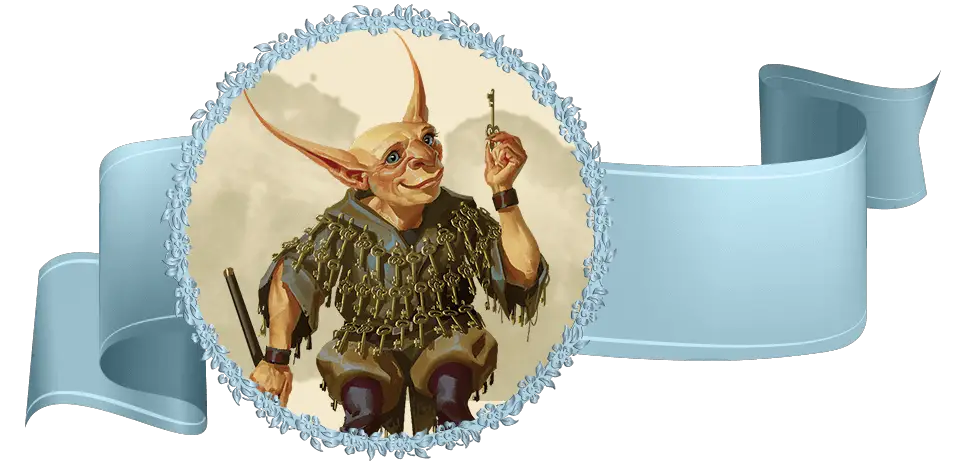
Racial Traits: Dexterity +2, Constitution +1, small-size, Darkvision, Fey Ancestry, Fury of the Small, Nimble Escape
A player can find the updated stats for the Goblin in Mordenkainen Presents: Monsters of the Multiverse.
Controversially prejudiced as scum at the bottom of the barrel, Goblins have been oppressed, dominated, fought, and crushed for nearly their entire existence. From this history, Goblins have learned to be self-reliant, aggressive, greedy, and cutthroat, though this nature has been overcome by a few Goblin heroes or civilians who have integrated with larger society. Despite their cunning tactics in battle, Goblins know how to be servile in self-preservation when defeated.
Reaching adulthood around 8 years of age, Goblins typically align with neutral-evil and care for themselves above all else. Commonly having lived underground, in caves, or in lairs, Goblins have excellent Darkvision and know how to leverage their small size for additional damage, as well as gaining action economy to escape or hide.
Where basic stats for the Goblin can be found in Volo’s Guide to Monsters, a few variant builds can be found on DMs Guild and in Plane Shift Ixalan and Zendikar settings. Dankwood Goblins are more gentle, inquisitive, and bonded to their forest creature friends. They are often neutral or good, though mischievous, and have abilities to speak with creatures. Ixalan Goblins have a climbing speed, and Zendikar Goblins have resistance to fire and psychic damages, additional AC when armored, and a few additional skills based on their tribe.
Though historically tragic and defeated, Goblins provide a rich roleplaying experience as well as unique playability as small creatures.
Flutes’ Lineage Analysis: Goblin
These small-sized creatures make interesting characters! You can ride medium-sized mounts since you’re small, and your racial features are enjoyable. Fury of the Small is a fun damage boost, but it’s not much. The real selling point is Nimble Escape that gives you a portion of a Rogue’s agility, allowing your bonus action to freely be used to Disengage.
Goliath
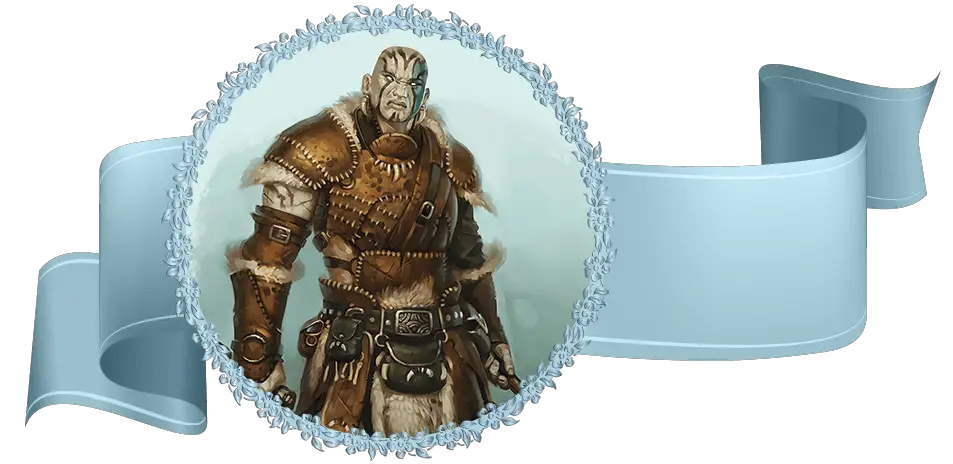
Racial Traits: Strength +2, Constitution +1, medium-size, Little Giant, Mountain Born, Stone’s Endurance
A player can find the updated stats for the Goliath in Mordenkainen Presents: Monsters of the Multiverse.
Carved strong and tall like the stone mountains they hail from, Goliaths are a nomadic tribal race who require each member to competitively earn their keep within. Disinclined to begrudge a better opponent, Goliaths have a strong sense of law and fairness, leaning neutral toward self-reliance and accountability.
As natural athletes, Goliaths range from 7 to 8 feet tall and age nearly the same as Humans. With the ability to roll off damage occasionally, an increased carrying capacity, resistance to cold and high elevations, and the ability to understand the Giant language, the Goliath is a strong choice for many classes.
Goliath abilities can be found in Volo’s Guide to Monsters.
Flutes’ Lineage Analysis: Goliath
I’ve played with many players who have chosen Goliath as their lineage. I bet you’ll agree it’s a popular choice. It’s simple, cool, and powerful. I don’t believe it has a stand-out feature that defines it, and its stat boosts aren’t as niche now that racial stat boosts can be placed in any stat (as of the publishing of TCoE).
I am pleased that errata fixed their Mountainborn feature. Now Goliaths have cold resistance. This simplified and expanded the feature. Having resistance to cold damage also means they don’t worry about frigid climates and waters, which is what was intended for Goliaths anyway.
Grung
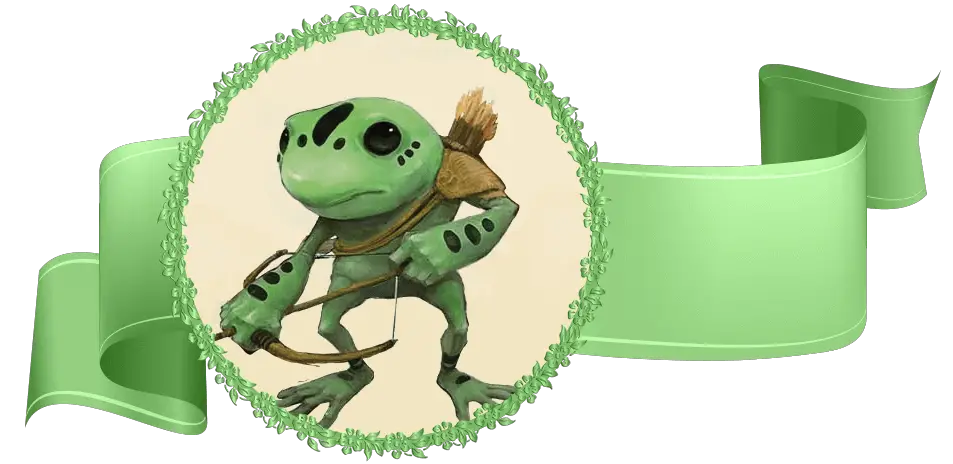
Racial Traits: Dexterity +2, Constitution +1, small-sized, Arboreal Alertness, Amphibious, Poison Immunity, Poisonous Skin, Standing Leap, Water Dependency
From One Grung Above.
(more lore and commentary coming soon)
Hadozee
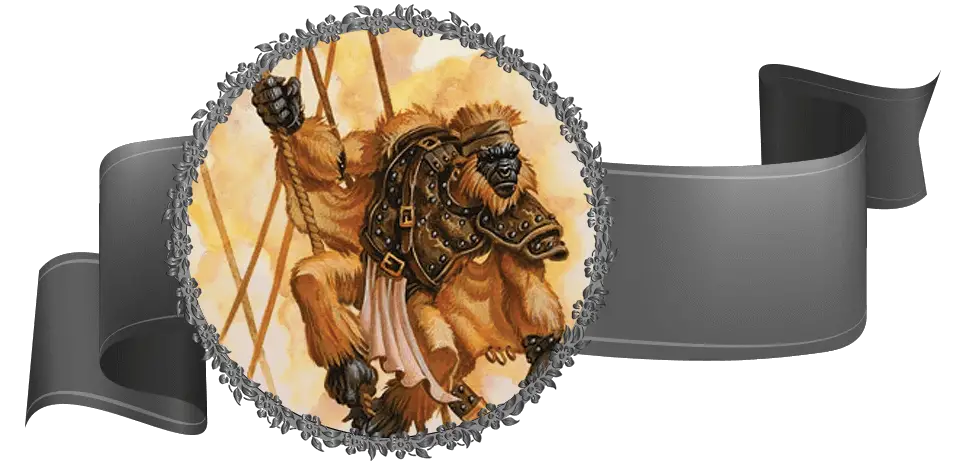
Racial Traits: Medium or small size, climbing speed, Dexterous Feet, Glide, Hadozee Dodge
From Spelljammer: Adventures in Space, the Hadozee made waves in the 5e community with its Glide ability before an errata fixed its easily exploitable movement. Glide is much more reasonable now for a parachute glide feature.
Dexterous Feet can be fun for players to try things that they may not have time for during their combat turns. Bonus action is required, but it’s a fun option to have. Now you can open and close a door in the same turn, which is weird to say since it won’t sound profound.
Hadozee Dodge is a useful way to mitigate damage. It scales with PB, too. Cool race!
Half-Elf
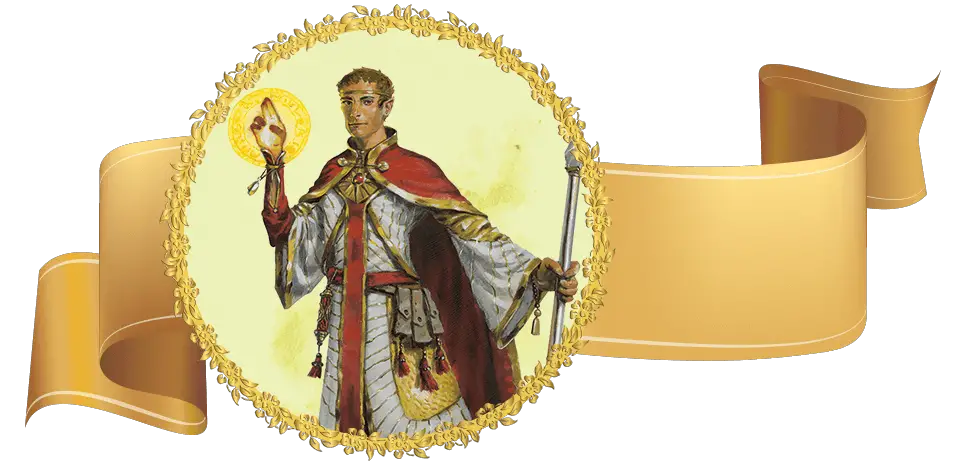
Racial Traits: Charisma +2, Two Ability Scores Increase +1, medium-size, Darkvision, Fey Ancestry, Skill Versatility
Birthed from the conception of a Human and an Elf, Half-Elves are tragic beings who are often seen as and feel like outsiders among their two differing worlds. From their humanity, they gained a sense of inquisitiveness, aspiration, and ingenuity, balanced by their Elvish traits like refinement, poeticism, and naturality.
With double the lifespan of Humans, Half-Elves tend to share the freedom-loving chaoticism of their Elvish ancestry along with the good-evil duality of human nature. Elven blood grants them Darkvision and advantage against being charmed and cannot be magically put to sleep, but they also gain a myriad of skills as a Human would.
From the Sword Coast Adventurer’s Guide, a Half-Elf could trade their skill versatility for a variant Elven Ancestry, ranging from weapon training to wizard spellcasting to increase speed or open up hiding options. Referencing Eberron: Rising from the Last War, the Mark of Detection Half-Elf gains favorable Wisdom, Investigation or Insight, spellcasting to detect magic, and expanding spellcasting options. Mark of Storm Half-Elves are similarly skilled in Charisma, Acrobatics, Navigation, and are sturdy against the sea’s storms. They also receive increased spellcasting abilities.
With this race, a player may adeptly roleplay complex character building without compromising robust skills and features.
Racial Feats for Half-Elves:
If you choose this race, consider looking at feats specifically designed for Half-Elves, including Prodigy from Xanathar’s Guide to Everything.
Flutes’ Lineage Analysis: Half-Elf
This race didn’t age well mechanically. It gets one more stat point than most races, though. Two skills of choice is nice, and charm resistance is great. I find this lineage dull, and it’s not as relatively strong as it was when we only had the PHB. If I played a Half-Elf, it would have to be a lineage that the DM made worth my while in the story to explore.
Half-Orc
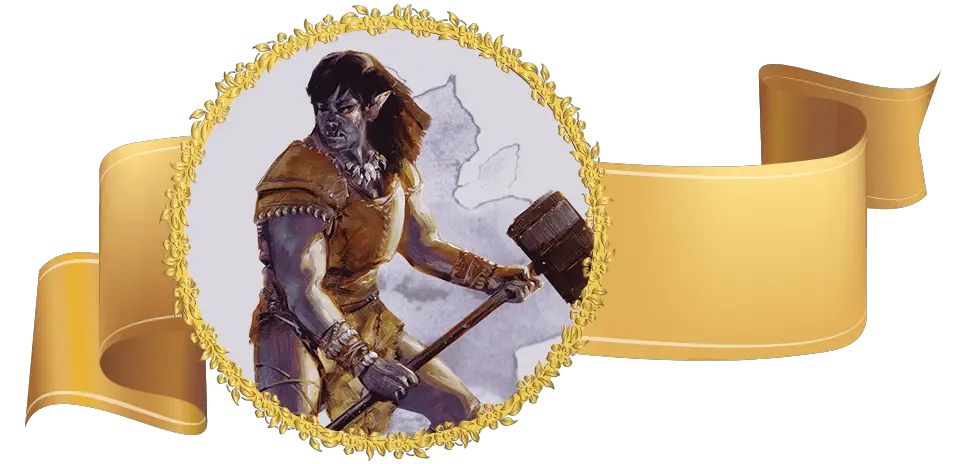
Racial Traits: Strength +2, Constitution +1, medium-size, Darkvision, Menacing, Relentless Endurance, Savage Attacks
Born from a Human and an Orc, a Half-Orc outwits their fellow monstrous race members with their human intelligence and smaller-frame agility and overpowers their weaker ancestry with their orcish strength. Maturing quicker than the average Human, a Half-Orc lives rarely longer than 75 years and often settles into a chaotic alignment, and evil if they grow up among the Orcs.
Naturally intimidating and enduring, Half-Orcs excel at weapon skills and gain additional bonuses when landing critical blows. From the Orc heritage, Half-Orcs gain Darkvision and are proficient in the Orc language and script.
From Eberron: Rising from the Last War, Half-Orc characters have a variant option with the Mark of Finding. This variant grants Half-Orcs bonuses to Perception and Survival as well as magic to locate creatures and objects. They may also gain proficiencies in Goblin and additional spellcasting.
Half-Orcs are published in the PHB.
Racial Feats for Half-Orcs:
If you choose this race, consider looking at the feat specifically designed for Half-Orcs, Orcish Fury from Xanathar’s Guide to Everything.
Flutes’ Lineage Analysis: Half-Orc
I adore Half-Orcs. The way they physically feel their emotions like needles or spicy food is incredibly interesting to me. Their features are helpful, too! I can picture heaps of characters utilizing the Half-Orc features effectively. Your survivability and damage dishing is helped by being a Half-Orc. I highly recommend this race if you are willing to explore their history with Gruumsh and the way they experience emotions.
Halfling
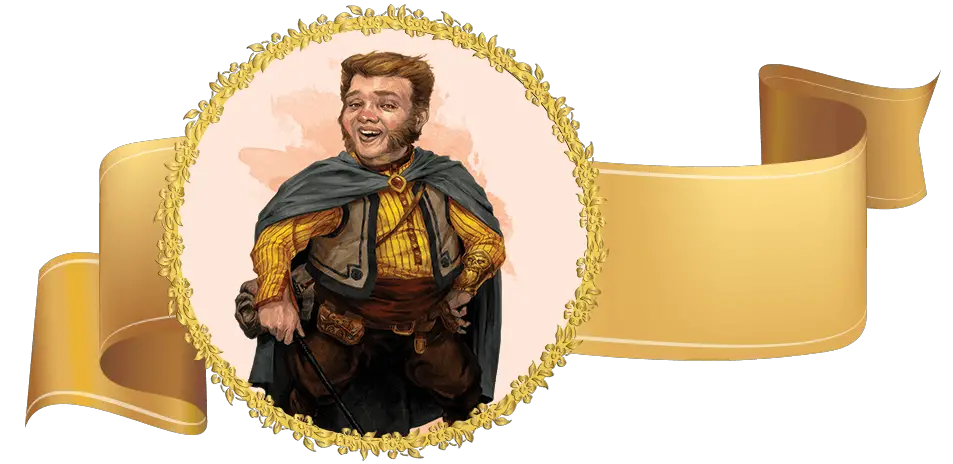
Racial Traits: Dexterity +2, small-size (25 speed), Lucky, Brave, Halfling Nimbleness
The Halfling, called Hin in Third Edition, known for their good-natured curiosity and inclinations to collect trinkets, stand strong in protection of their allies and homelands, despite their goals of peaceful and comfortable home life. Reaching adulthood around 20 and living through nearly two centuries, these lawful-good beings suffer when they see others suffering, fight against intolerance and oppression, and rely deeply on their sense of tradition and community.
With advantage against being frightened and agility to move through tight spaces, the Halfling has many appealing features, especially when considering subraces. From the Player’s Handbook, the Lightfoot excels in stealth, and the Stout is resistant to poison. Hailing from Sword Coast Adventurer’s Guide, the Ghostwise telepathically extends their communication beyond speech.
The Lotusden Halfling from Explorer’s Guide to Wildemount hones natural Druid-like spellcasting while skillfully moving through terrain to mask their movement. Two subraces from Eberron: Rising from the Last War provide additional features: the Mark of Hospitality allows players to find a profession in brewing, cooking, and the service industry, while providing accompanying spells; and the Mark of Healing provides proficiencies in Herbalism and Medicine, including a myriad of spells to assist in this manner.
Though small and peaceful, the Halfling displays an unparalleled might and courage. Combined with their myriad of skills and abilities, this race is a solid choice for any class.
Halfling Subraces:
- Lightfoot (PHB): Charisma +1, Naturally Stealthy
- Stout (PHB): Constitution +1, Stout Resilience
- Ghostwise (SCAG): Wisdom +1, Silent Speech
- Lotusden (EGW): Wisdom +1, Child of the Wood, Timberwalk
Racial Feats for Halflings:
If you choose this race, consider looking at feats specifically designed for Halflings, including Bountiful Luck, Second Chance, and Squat Nimbleness from Xanathar’s Guide to Everything.
Flutes’ Lineage Analysis: Halfling
As we’re writing this article, I’m currently playing a Halfling. I love rerolling ones! Moving through the spaces of other creatures is helpful, too. Poison is an important damage type to resist, though it hasn’t come up for me.
Being small with a slower speed can be a bummer, but I think Halfling movement speed will be increased to 30 in 2024. Small races are fun to switch up my usual playstyle and in-character worldview.
Harengon
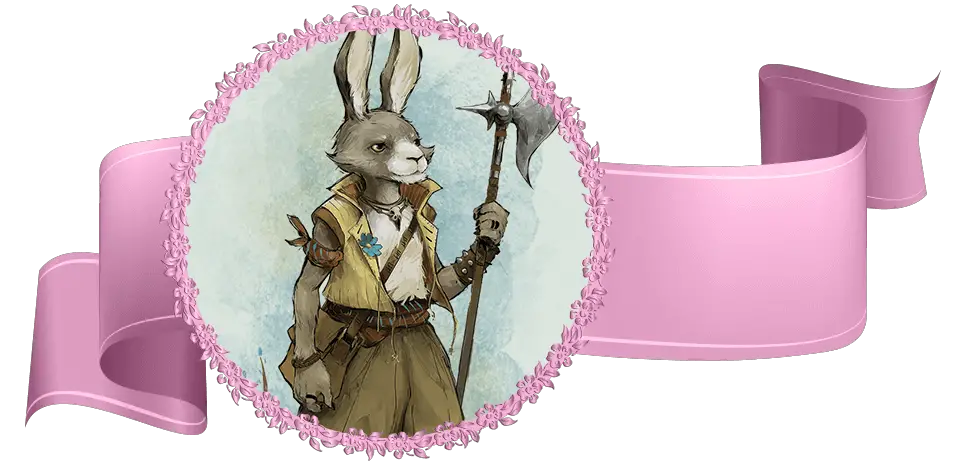
Racial Traits: +2 and +1 to different stats of your choice, medium/small size (your choice), Hare-Trigger, Leporine Senses, Lucky Footwork, Rabbit Hop
A player can find the updated stats for the Harengon in Mordenkainen Presents: Monsters of the Multiverse.
Freedom-thriving extensive travelers, this rabbit-like bipedal race comes from The Wild Beyond The Witchlight. Energetic and exuberant Fey beings ready to spring into action, Harengon are kissed with luck and circumvent danger at the last moment.
Sylvan speaking and jumpers between worlds, Harengon spend their 100 years learning new languages and have adept Perception. With abilities like adding a bonus to Dexterity saving throws and jumping an extended range as a bonus action, the Harengon is an agile and jovial race to play.
Flutes’ Lineage Analysis: Harengon
This race created quite a splash when it released, and I can see why. Harengon characters will have unique tools to help them in combat. The hop feature is not tied to a character’s movement like most jumping is, so you effectively gain movement and free disengaging with the hop. You can jump high or far.
Gaining a bonus to Initiative rolls, Harengon characters are well suited to acting early in combat. This suits many playstyles and helps a character to survive and strike in combat. Going first is a huge boon, so the Harengon will be popular for its Initiative bonus. By the way, this stacks with the Rogue’s Reliable Talent feature for extremely consistent Initiative rolling.
Perception is the best skill in the game for a variety of reasons, so picking it up for free is nice. This character is poised for avoiding and setting ambushes.
Hexblood
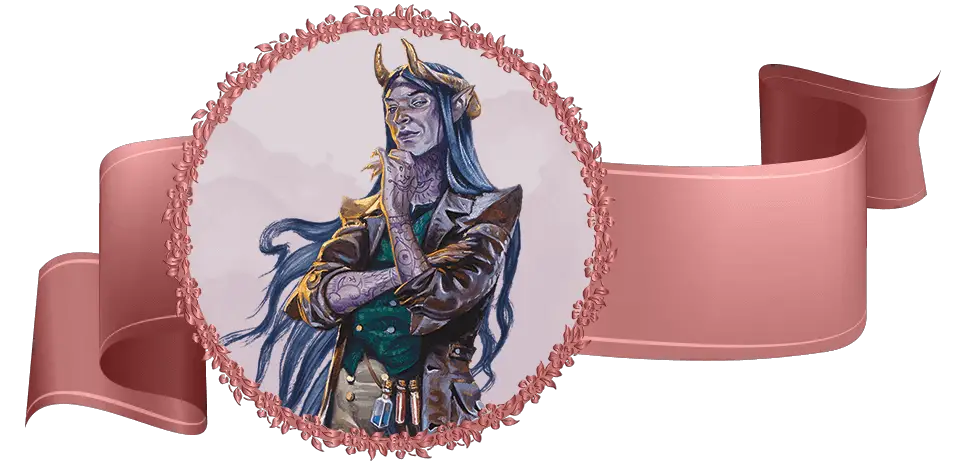
Racial Traits: +2 and +1 to two different ability scores or +1 to three ability scores, Ancestral Legacy, Darkvision, Eerie Token (Telepathic Message & Remote Viewing), Hex Magic
The Hexblood is a lineage found within Van Richten’s Guide to Ravenloft. Hexbloods have been pickled by eldritch, fey, or witchcraft energy. Those who make bargains with Hags may find themselves transformed into a Hexblood. This lineage may resemble a Warlock’s pact with an otherworldly being
During a coming of age, humans may grow up to find that they are Hexbloods. This can happen when a Hag influences them during infancy or childhood with dark magic (think of Sleeping Beauty). A Hag’s influence may even begin before birth. This seems like a nicer version of the Hag lore that involves eating children and then giving birth to copies of them that become Hags when they’re old enough (yikes). This is evidenced by the sidebar in the Hexblood’s description that specifies how a Hexblood may undergo a ritual to become a Hag. The book says the Hexblood becomes a Hag NPC with such a ritual, so the DM takes over the character and the player must make a new character. I’ll leave that up to you whether you honor that sidebar.
A Hexblood adopts characteristics that are typical of the Hag(s) it bargained with: forked ears, lurid skin shades, uncuttable hair, or horns that resemble a crown (not really horns). It may be that a Hexblood’s characteristics are temporary until they settle their bargain with their respective Hag. It’s like trying to repay a fey drug dealer, really.
Flutes’ Lineage Analysis: Hexblood
Hags are super interesting monsters to use in D&D (maybe one of the best). Naturally, Hexbloods based on Hags are also intriguing. I don’t find anything mechanically crazy with this lineage, but the lore and story elements are tempting. DMs can have fun introducing a player to a Hexblood concept to give a player character new direction. Clever players will enjoy the Eerie Token and Hex Magic features, particularly if the player characters are not already spellcasters.
Hobgoblin
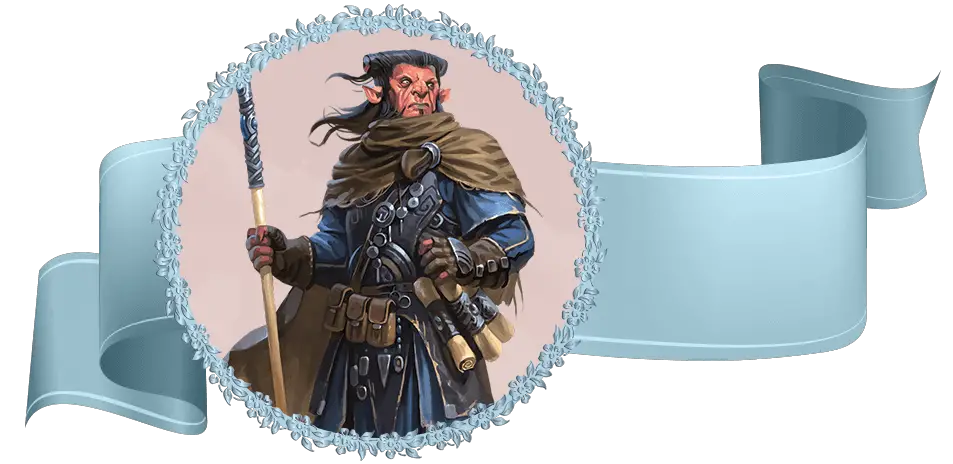
Racial Traits: Constitution +2, Intelligence +1, medium-size, Darkvision, Fey Ancestry, Fey Gift, Fortune from the Many
A player can find the updated stats for the Hobgoblin in Mordenkainen Presents: Monsters of the Multiverse.
Among the stronger tier of goblinoids, Hobgoblins are typically vicious and brutal, reflecting the society from which they develop. Prone to short fuses and acting in anger, Hobgoblins enjoy torturing those who have wronged them. They adhere to a ruthless code of conduct that allows them to align lawful evil, usually.
With Darkvision and martial training proficiencies, Hobgoblins are excellent in battle, even being able to add a bonus to a missed attack roll once per short or long rest. The rest of this race build can be found in Volo’s Guide to Monsters, but a lesser-known variant can be found in Unearthed Arcana. The Hobgoblin of the Feywild utilizes their Fey ancestry to avoid being charmed, take the Help action as a bonus action with additional options: Hospitality to give and get temporary hit points, Passage to increase walking speed, and Spite to impose disadvantage against a future attack roll.
Flutes’ Lineage Analysis: Hobgoblin
The militaristic nature of Hobgoblins is intriguing to me. They have unique features that lend well to warmongering wizards and brutal enforcers.
Gaining light armor proficiency is useful for spellcasters because they can then take the Moderately Armored feat for a massive AC boost without multiclassing. Saving Face recharges on a short rest and can help you pass a saving throw, potentially turning the tides in your favor.
Human

Racial Traits: All Ability Scores Increase +1, medium-size / Variant Human: +1 to two stats, select a feat and a skill
Fierce and often disagreeable, Humans span the entire material plane and excel in their diversity and ambition. The youngest of the created races, Humans live shorter than most races, which pushes them to accomplish much in their allotted time. Complex and dualistic in nature, Humans have no particular alignment they adhere to, and find themselves interested in a wide array of skills and abilities.
While the standard Human has an increase in each ability score by one, the Player’s Handbook allows a Variant build that provides a skill proficiency and a feat of choice.
Eberron: Rising from the Last War provides a Mark of Finding option that gives Humans darkvision, additional Wisdom support, Hunter’s Mark, and a few additional spells. Mark of Handling gives bonuses to Animal Handling and Nature as well as Animal Friendship and Speak with Animals abilities and additional spells. Mark of Making allows Humans to explore artisanship, giving bonuses to Arcana and Artisan’s Tools, and additional spellcasting like Mending, Identify, Fabricate, and so forth. The Mark of Passage increases a Human’s walking speed, gives bonuses to Acrobatics and Land Vehicle operation, and provides additional magic like Misty Step, Expeditious Retreat, Blink, and more. Finally, Mark of Sentinel allows a Human to become a guardian with bonuses to Insight and Perception, the ability to cast Shield, a reaction to take a hit for a creature, and additional spells.
As possibly the most relatable race to play, Humans allow a player to explore fantasy with an arsenal of skills and abilities at hand.
Racial Feats for Humans:
If you choose this race, consider looking at feats specifically designed for Humans, such as Prodigy from Xanathar’s Guide to Everything.
Flutes’ Lineage Analysis: Human
Variant Human is a popular character choice because feats are so impactful to the game. This is particularly true since the 5e “metagame” suggests many groups end their campaigns and startover or disband before tier-three play. Grabbing feats earlier means you can actually realize your character before your game ends. That’s right; it’s not just about becoming powerful early in the game. It’s also about becoming powerful at all.
Custom Lineage gives Variant Human competition these days, but the Variant Human will always be known as one of the most powerful, customizable races.
Kalashtar
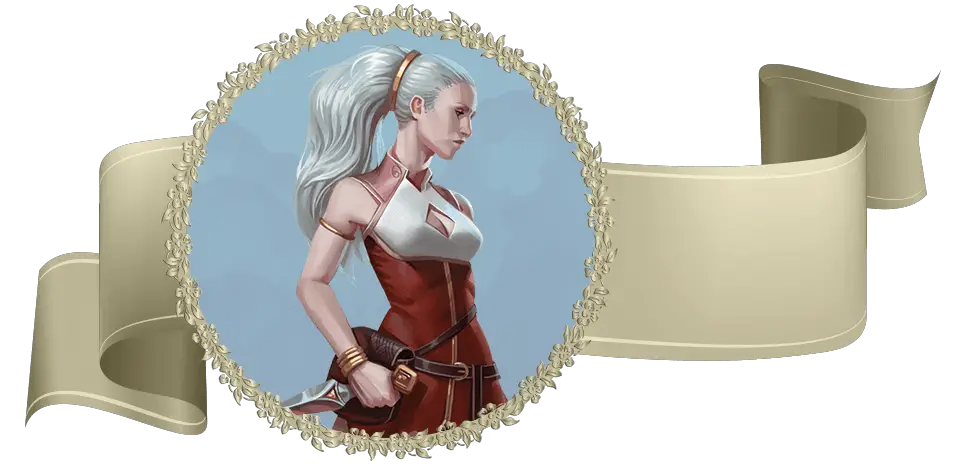
Racial Traits: Wisdom +2, Charisma +1, medium-sized, Dual Mind, Mental Discipline, Mind Link, Severed from Dreams
The Kalashtar lineage comes to us from the Eberron setting where these people have become compounded, meaning more than one soul inhabits the body. This consolidation of souls into the Kalashtar’s body happened due to interactions with the Plane of Dreams. Spirits who share physical space with the Kalashtar are called Quori, named for Dal Quor in the realm of dreams of which they fled.
Kalashtar are described as haunted due to their experiences with otherworldly spirits. Their eyes often glow when they express intense emotion.
Quori do not directly communicate with their Kalashtar hosts. Their communication is better described as instincts and impressions. Additionally, Kalashtar draw from the memories of their Quori instead of connecting with the plane of dreams like other humanoids who sleep. Quori are virtuous spirits, but they may vary in their temperament. Some are warriors while others are thinkers. Kalashtar often manifest psionic powers due to their dual-minded natures.
A Kalashtar will usually know the nature and name of their Quori, but a DM may work with a player to discover traits and details about an unknown Quori.
One of the interesting aspects of Kalashtar life is the desire to meditate and do good in order to cleanse the dream-realm of Dal Quor. Their psychic energy is devoted to the Path of Light as a process of trying to dispel the evil spirits of their homeland/realm. Orphaned Kalashtars may know nothing about Dal Quor or the Quori, choosing rebellion against the instincts and impressions of their own Quori spirits. This can lead to internal conflicts and moody natures.
Kalashtar names are based on prefixes they affix to the names of their Quori. Orphaned Kalashtar children may not have names of this sort.
Flutes’ Lineage Analysis: Kalashtar
When I first heard about the Kalashtar, I thought it sounded like a messy concept. However, after studying more about them, I find them fascinating. They can introduce a whole new dynamic to your campaign if you develop their unique relationships with the dream world. You might think the dreamless nature of the Kalashtar is mere flavor text, but it can come in handy. I love to use the Dream spell as a player and DM, so being immune to a Dream spell is helpful! This is a cool race with useful mechanics that I highly recommend trying for your next character.
Kenku
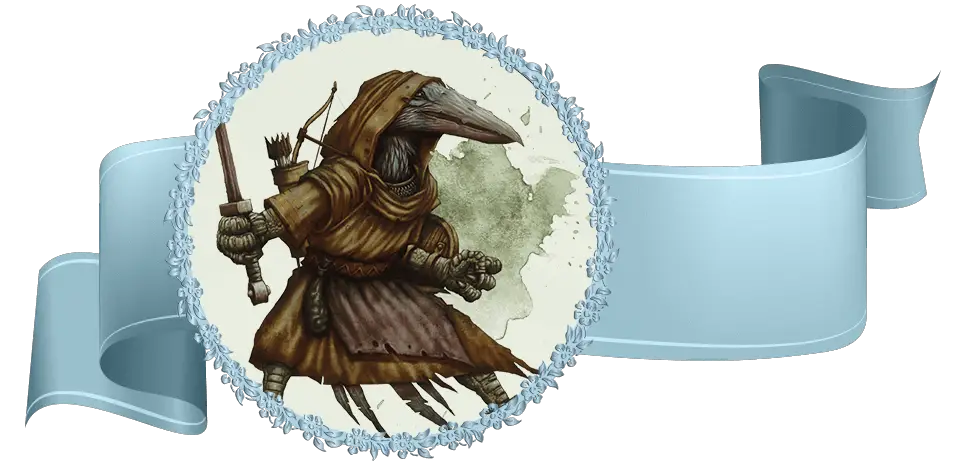
Racial Traits: Dexterity +2, Wisdom +1, medium or small size, Expert Duplication, Kenku Recall, Mimicry
A player can find the updated stats for the Kenku in Mordenkainen Presents: Monsters of the Multiverse.
Volo’s Guide to Monsters provides details on this flightless avian humanoid. Secretive and selfish with lucrative plots to gain power and fortunes, the Kenku are fabled to have lost their abilities of flight from an ancient crime that plagues their future, forcing the beings to wander without a home on the fringes of society.
With a shorter lifespan than Humans, Kenku reach adulthood by age 12 and are not known as creatures of commitment. Hardly following through with their promises, most Kenku find themselves chaotically aligned, though generally neutral. Adept at duplicating handwriting and mimicking sounds and voices, Kenku are skillful deceivers with abilities to follow suit.
Flutes’ Lineage Analysis: Kenku
Many players were excited about this race early on, but I think they found the race harder to roleplay than they anticipated. Having said that, I think the Kenku’s features are unique and rewarding for experienced players.
Kobold
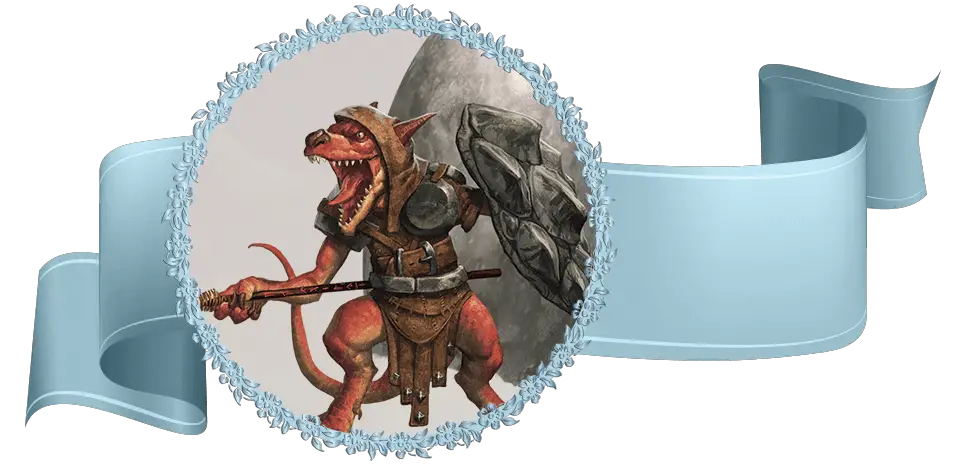
Racial Traits: Dexterity +2, small-size, Darkvision, Draconic Cry, Kobold Legacy, Craftiness, Defiance, Draconic Sorcery
A player can find the updated stats for the Kobold in Mordenkainen Presents: Monsters of the Multiverse.
Distant cousins to the Dragonborn, Kobolds hold to their strong sense of social structure and loyalty to their kin. Industrious inventors, clever ambushers, and prone to work together, Kobolds are small-sized and share reptilian features to dragons, whom they worship. With the goal of conquering lands, Kobold tribes dig mines and cover their tracks with mechanical traps.
From Volo’s Guide to Monsters, we read that Kobolds are notoriously selfish but rely on the strength of their pack to accomplish their goals, ultimately aligning them with lawful evil. Utilizing their small size and feeble stature, Kobolds cleverly grovel in order to distract attacking enemies. Kobolds also rely on their allies to bolster their attack efforts. And while they have sensitivity to sunlight, they are keen observers in the dark.
Flutes’ Lineage Analysis: Kobold
One of my favorite things about the Kobold is how they’re reborn until they ascend into draconic status in a future life. Their lives are short, but they know they’ll be born again and rewarded for their loyalty to their pack.
Errata was kind to Kobolds because it removed the Strength penalty.
Pack Tactics is an excellent ability that doesn’t use a resource. Gaining advantage with ease is extremely helpful in D&D 5e. Pack Tactics can offset Sunlight Sensitivity, too. Kobold is a fantastic race for your character!
Leonin
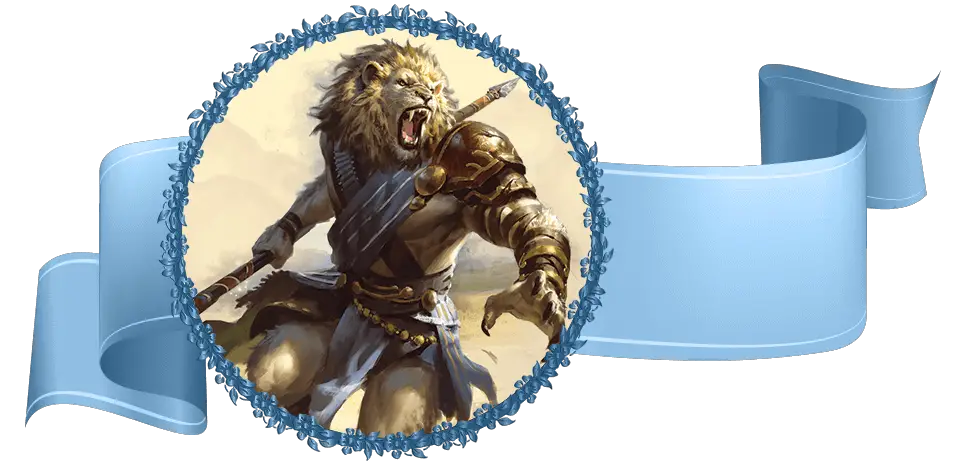
Racial Traits: Constitution +2, Strength +1, medium-sized, 35-foot walking speed, Darkvision, Claws, Hunter’s Instincts, Daunting Roar
From Mythic Odysseys of Theros.
(more lore and commentary coming soon)
Lizardfolk
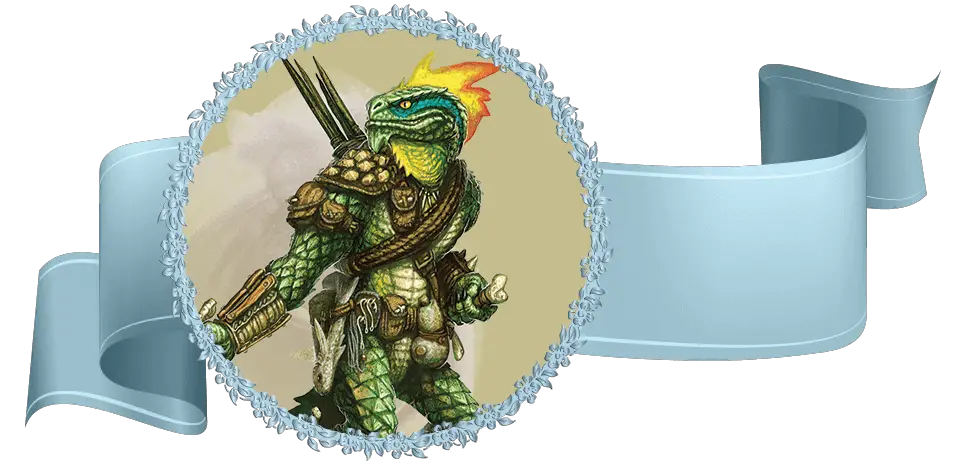
Racial Traits: Constitution +2, Wisdom +1, medium-size, Bite, Hold Breath, Hungry Jaws, Natural Armor, Nature’s Intuition
A player can find the updated stats for the Lizardfolk in Mordenkainen Presents: Monsters of the Multiverse.
A monstrous race from Volo’s Guide to Monsters, Lizardfolk possess an enigmatic mindset driven by different goals than the “softskin” humanoids they often frightened. While mostly ignoring jewels and riches, Lizardfolk find great satisfaction in omnivorous eating and often drop what they are doing to sniff out food. Uninterested in battle tactics, Lizardfolk stormed the battlefield chaotically as individuals among their tribe, preferring forcing their targets to the water, where they adeptly swim.
From their tribes, Lizardfolk learn that the strong take what they want, as adult Lizardfolk hardly leave scraps for their hatchlings. With focus on survival, Lizardfolk utilize their natural bite weapons, which gain additional damage as unarmed attacks. They are savvy at creating crude weapons from natural materials, and they thrive as natural hunters with natural scaly protection.
In battle, when a target falls, Lizardfolk may throw themselves upon the carcass and feed, regaining stamina in the process. While savage and brutish, this race allows for extensive and unique roleplayability and combat utilization explored seldomly by players.
Flutes’ Lineage Analysis: Lizardfolk
These scaly people enjoy interesting biological lore. Their colors are determined by the minerals of the soil from the nest their egg hatched from, for example. They also have interesting gender roles, in my opinion.
Lizardfolk traits are uniquely suited to characters who want to “rough it” with their equipment. They can craft bone/tooth weapons, use their scales for armor, and bite fools who venture too close. Holding breath with a swimming speed can be useful for setting ambushes or exploring the shallows. You’ll be combat-capable if you find yourself in watery situations.
Locathah
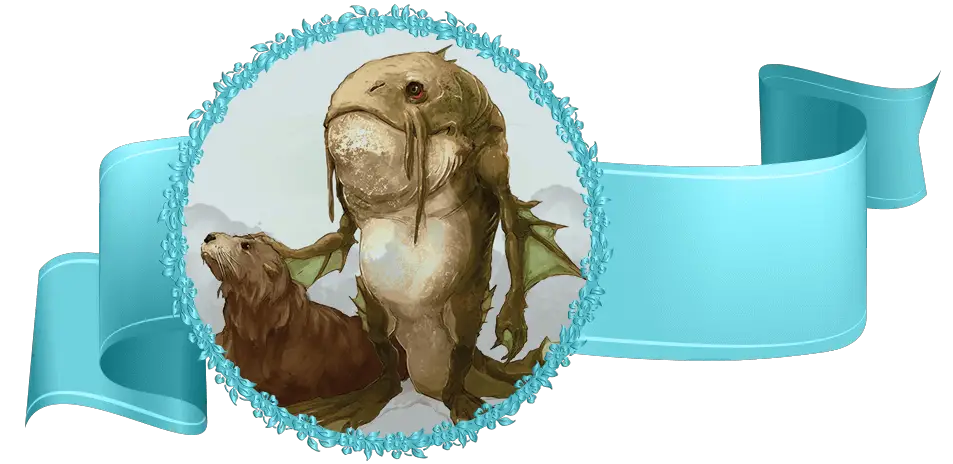
Racial Traits: Strength +2, Dexterity +1, medium-sized, swimming speed, Natural Armor, Observant & Athletic, Leviathan Will, Limited Amphibiousness
From Locathah Rising.
(more lore and commentary coming soon)
Loxodon
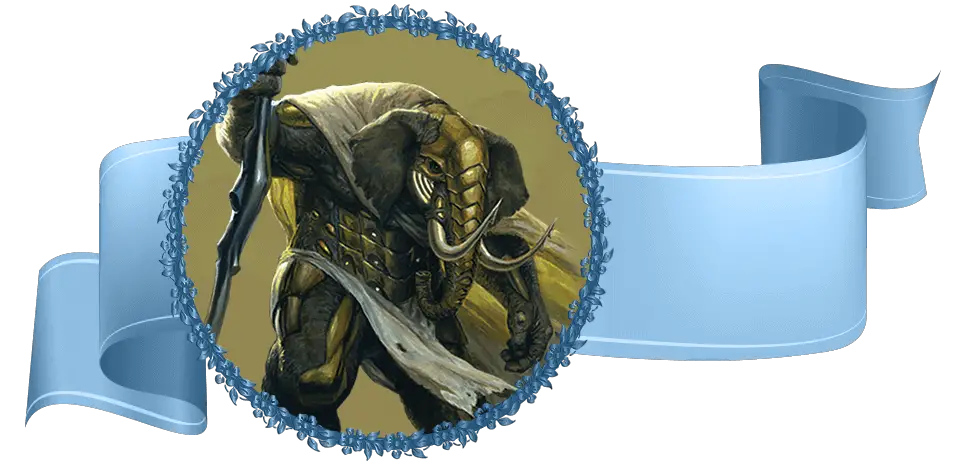
Racial Traits: Constitution +2, Wisdom +1, medium-sized, Trunk, Natural Armor, Keen Smell, Powerful Build, Loxodon Serenity
From Guildmaster’s Guide to Ravnica and Mythic Odysseys of Theros.
(more lore and commentary coming soon)
Minotaur
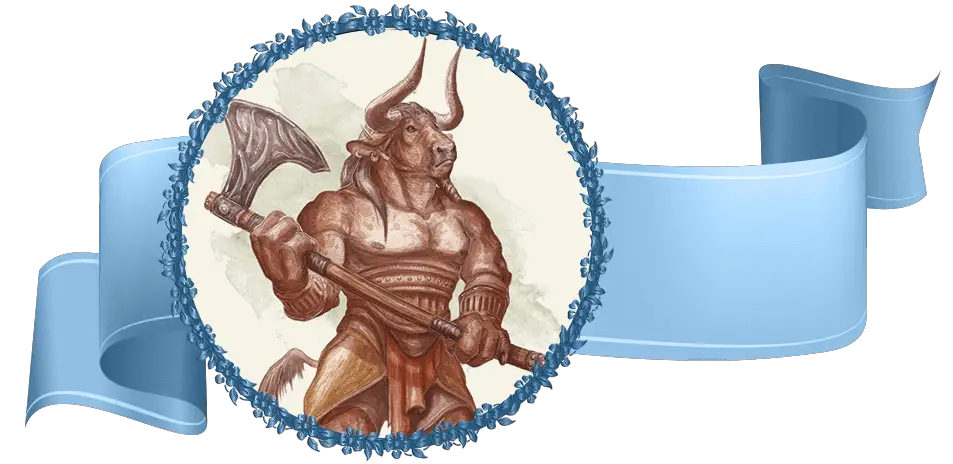
Racial Traits: Strength +2, Constitution +1, medium-size, Horns, Goring Rush, Hammering Horns, Labyrinthine Recall
A player can find the updated stats for the Minotaur in Mordenkainen Presents: Monsters of the Multiverse.
Rare to encounter outside of their Underdark Labyrinth dwellings, these bull-human hybrid monstrous beings are dually brutal and empathetic, stubborn and kind. With a natural sense of direction, Minotaurs are highly instinctive and skilled in planning ambushes. Often employed as mercenaries and fighters, or finding wealth from plundering and raiding, Minotaurs are often tragically subjugated by mind flayers and drow.
From Guildmaster’s Guide to Ravnica and Mythic Odysseys of Theros, we learn that there are various alignments typical for Minotaurs depending on their clan. With natural melee-weapon horns and a charge capable of carnage, Minotaurs can be highly intimidating or persuasive and make for fascinating playable characters.
Flutes’ Lineage Analysis: Minotaur
I like that the Minotaur has a built-in attack with its bonus action as a follow-up to the Attack action. It’s not synergistic with Great Weapon Master, but when you don’t kill or crit, it’s nice to still attack with a bonus action. This is actually pretty cool for a heavy weapon melee character build.
The aesthetic and lore of Minotaurs isn’t as interesting to me as other races that are suited to melee bruiser builds, but I respect Minotaurs. I like charge abilities for chasing down enemies with brutal speed, and Minotaurs do that.
Orc
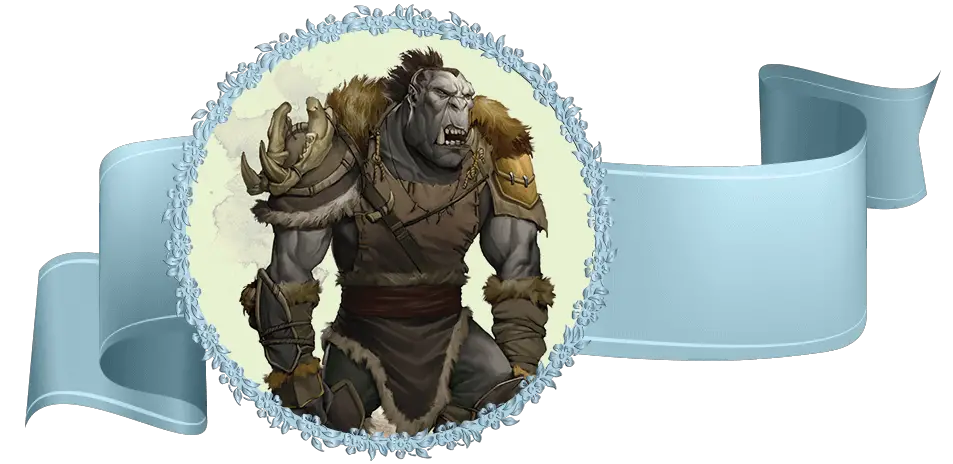
Racial Traits: Strength +2, Constitution +1, medium-size, Darkvision, Adrenaline Rush, Powerful Build, Relentless Endurance
A player can find the updated stats for the Orc in Mordenkainen Presents: Monsters of the Multiverse.
Notoriously feared as threats to civilized societies, Orcs have been known to be cutthroat, unrelenting, and savage. While there are many subraces to Orcs, such as Mountain Orcs, Gray Orcs, Orogs, and Boogins, all Orcs share their desire to bring glory to their tribe and Gruumsh, their god. With conquering spirits and a belief that they should rule all, Orcs value strength above all else.
Volo’s Guide to Monsters provides race details, such as an Orc’s sight in dim light, their bonus action ability to move to a creature they can see or hear, their intuition in primal skills, and their ability to carry beyond their usual capacity. Eberron: Rising from the Last War flavors Orcs significantly differently as more emotional and given to strong passions, often less evil than their cousins in Volo’s, though their abilities remain ultimately the same. Similarly, Orcs from Explorer’s Guide to Wildemount gain unique motivations and history, as they either accept or reject their fate of a curse that plagues their race, pushing them to either chaos or lawfulness.
Regardless of your Orc character’s motivations and temperaments, this race allows players to explore how emotions guide their choices against the backdrop of a typically savage society.
Flutes’ Lineage Analysis: Orc
As I said with Half-Orcs, I believe Orcish heritage and lore is compelling and fascinating. I’d gladly play an Orc, but I like the mechanics of the Half-Orc better. I highly recommend reading the entire section of Volo’s that is devoted to Orcs. There is a lot of nuance, tradition, and inspiring lore there.
Errata was kind to Orcs since it removed their Intelligence penalty. They also gained more flexibility by having Menacing replaced with Primal Intuition (choice of two skills).
Owlin
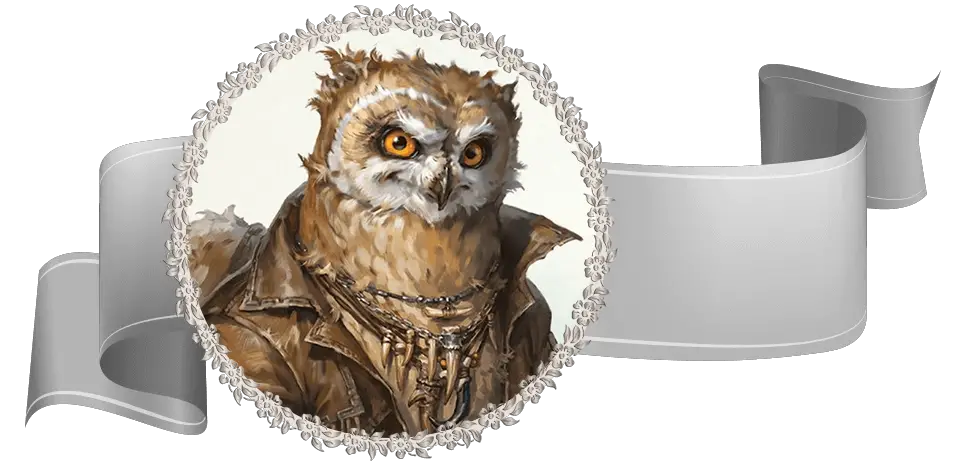
Racial Traits: +2 and +1 to two different stats (or +1 to three), medium/small size (your choice), Darkvision, Flight, Silent Feathers
Descendants of Fey giant owls, Owlin are majestic fliers, stealthy predators, and wise night beings. From Strixhaven: A Curriculum of Chaos, we learn that Owlin mirror their wise namesakes in many mythologies with interests in the arcane, moderated only by their mischievous Fey ancestry.
With adept Darkvision, proficiencies in Stealth, and powers of flight, the Owlin is a notable race that fits into a variety of whimsical campaign settings.
Flutes’ Lineage Analysis: Owlin
I believe WotC learned from their past mistakes with the Aarakocra. It’s refreshing to see that we’re getting flying races again, but with limitations built in. The armor limitation is completely fair, for example. The flying speed isn’t inherently faster than most creatures, either.
Plasmoid
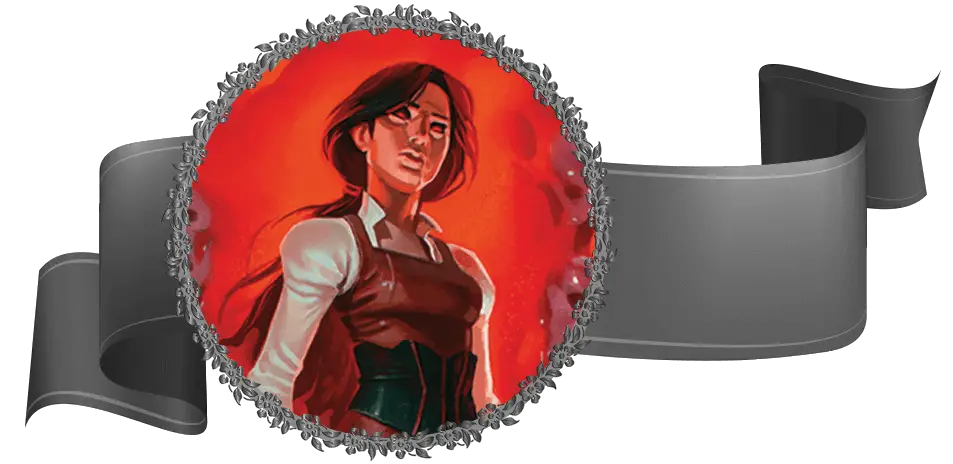
Racial Traits: Ooze creature type, medium or small size, Amorphous, Darkvision, Hold Breath, Natural Resilience, Shape Self
From Spelljammer: Adventures in Space, Plasmoids are a popular new option. Playing as an ooze creature is appealing to many players. They make useful infiltrators as they squeeze through small spaces. They have defensive resistances to poison and acid, and they can protrude a useful pseudopod. Plasmoids can shape themselves like humanoids or they can embrace being a blog.
Reborn
Racial Traits: +2 and +1 to two different ability scores or +1 to three ability scores, Ancestral Legacy, Deathless Nature, Knowledge from a Past Life
The Reborn is a lineage found within Van Richten’s Guide to Ravenloft. Characters of Reborn lineage have certainly died, but they’re somehow living. Their bodies bear reminders of their fatal demise. These marks may be scars, transparent skin, bloodless/dark veins, or necrotic flesh. Other types of Reborn may be miracles of magic, becoming sentient versions of the similar Flesh Golem. They may be pieced together with the souls and bodies of other creatures entirely. Regardless of their origin, a Reborn can find a new life in its strange state between death and life.
Reborn characters will often have unreliable, muddled memories. Recollections may be vague or uncomfortably empty. Sensory experiences in their current life may jog their memories and jaunt their consciousness back to a previously unrealized memory of a similar time.
DMs can gift Reborn characters with Lost Memories when they rest. Reborn characters do not sleep, so they stretch and reflect in long swaths of time, sometimes resulting in discovered memories. These Lost Memories can be discovered in times of stress, too.
Flutes’ Lineage Analysis: Reborn
This lineage is a gold mine for DMs. It finally allows you to do the often-tried-but-often-awkward amnesia storylines without ruining the game’s fun. I also love that this lineage has mechanics baked in to incentivize a player to want knowledge form their past life. It benefits them in the form of dice, which is a language all players speak fluently. Deathless Nature is a combination of many features I’ve seen before that were alright, but together they make a spicy character trait. I particularly enjoy the ability to not need sleep because it’s what I’d want in real life.
Satyr
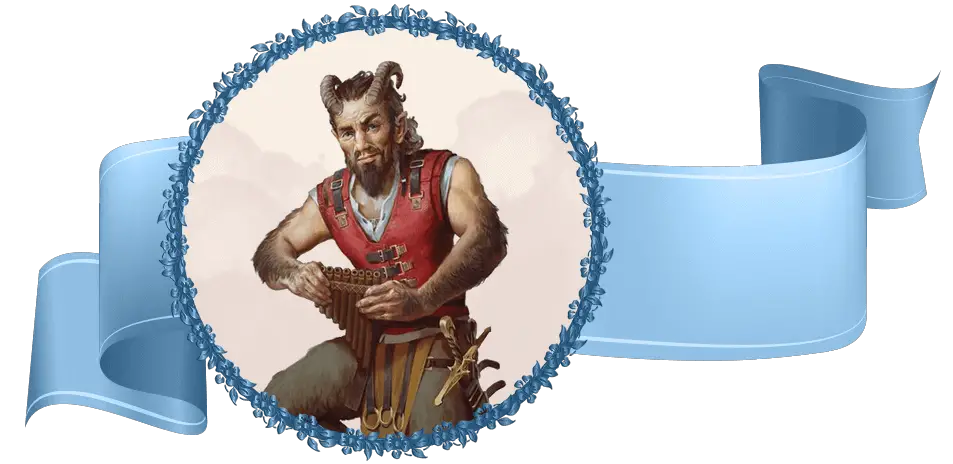
Racial Traits: Charisma +2, Dexterity +1, medium-sized, 35-foot walking speed, Fey creature type, Ram, Magic Resistance, Mirthful Leaps, Reveler
From Mythic Odysseys of Theros. A player can find the updated stats for the Satyr in Mordenkainen Presents: Monsters of the Multiverse.
Satyrs originate from the Feywild where they thrive on the pure emotion of that plane. They revel in merriment and social energy.
Shifter
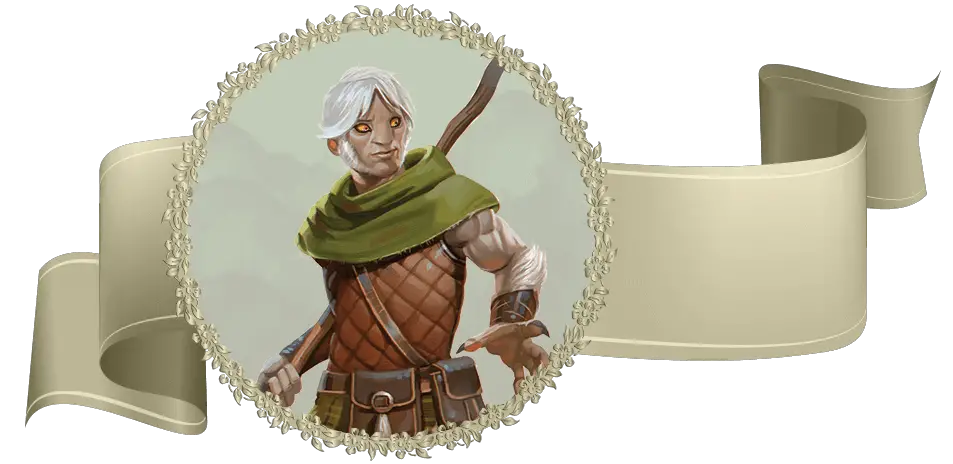
Racial Traits: Ability scores determined by subrace, medium-sized, Darkvision, Shifting, Bestial Instincts
A player can find the updated stats for the Shifter in Mordenkainen Presents: Monsters of the Multiverse.
Also referred to as the Weretouched, Shifters are believed to be descendants of lycanthropes (werewolves and similar lycanthropy types). They cannot fully transform as one with lycanthropy can, but they can partially “shift” to become more bestial. Their bestial side often calls to them, creating a conflict between their human, civilized side and their primal instincts. The call of the wild is a strong influence on how Shifters may behave or make a living for themselves.
The type of beast that a Shifter communes with will affect their personality and even their physical traits. Discovering the beast within is a critical phase of a Shifter’s coming of age. It’s how they find their individuality and purpose.
Tending to have bestial features like flat noses and long ears, Shifters can stick out in human societies. They almost always have prominent canine teeth and have thin fur covering their bodies.
Shifter culture focuses on self-reliance and freedom. They believe in being prepared for “the journey to come” as a kind of mantra, striving to be ready for anything that life brings them. Their names are typically focused on physical traits, personality quirks, or animals.
The Shifter race comes to us from the Eberron setting.
Shifter Subraces:
- Beasthide: Constitution +2, Strength +1, Natural Athlete, Shifting Feature
- Longtooth: Strength +2, Dexterity +1, Fierce, Shifting Feature
- Swiftstride: Dexterity +2, Charisma +1, Graceful, Shifting Feature
- Wildhunt: Wisdom +2, Dexterity +1, Natural Tracker, Shifting Feature
Flutes’ Lineage Analysis: Shifter
Shifters are a marvelous race to explore. I enjoy their lore, and their mechanics sing with that lore. The Wildhunt’s shift effect is my favorite as it denies advantage from nearby attacks, meaning you could be a Wildhunt Barbarian using Reckless Attack without worrying about incoming attacks with advantage. Cool! Swiftstride is great for archers or strikers who don’t want to be attacked by adjacent creatures. Beasthide gains a few more temporary hitpoints and +1 to AC, which is ok. Longtooth’s bonus actoin attack is fine if you’re not already using your bonus action each turn.
Simic Hybrid
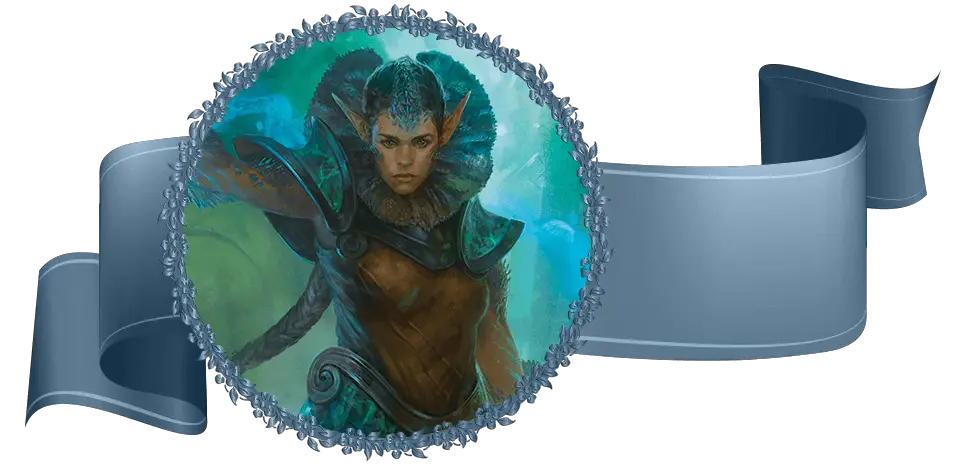
Racial Traits: Constitution +2, +1 to an ability score of your choice, medium-sized, Darkvision, Animal Enhancement (Manta Glide, Nimble Climber, Underwater Adaptation, Grappling Appendages, Carapace, Acid Spit)
From Guildmaster’s Guide to Ravnica.
(more lore and commentary coming soon)
Tabaxi
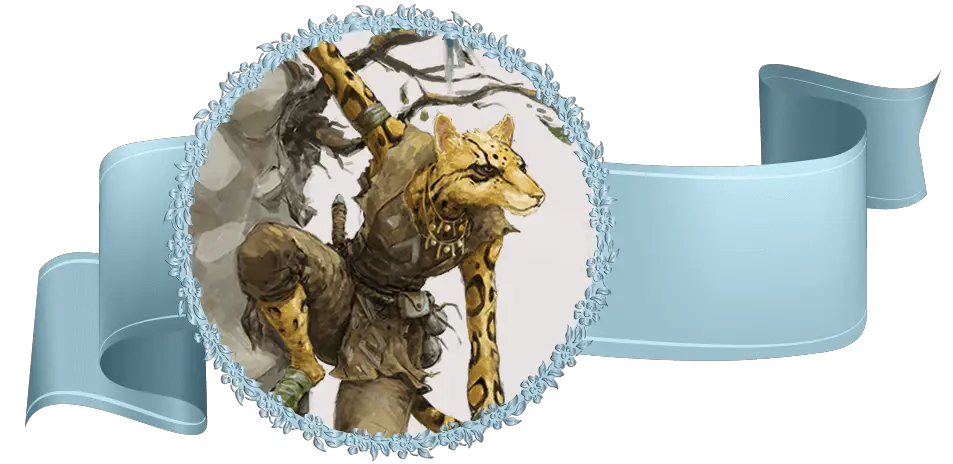
Racial Traits: Dexterity +2, Charisma +1, medium-size, Darkvision, Feline Agility, Cat’s Claws, Cat’s Talent
A player can find the updated stats for the Tabaxi in Mordenkainen Presents: Monsters of the Multiverse.
Unique in their feline humanoid forms, Tabaxi are typically native to the jungles in reclusive societies. Nonetheless, with their curious natures, Tabaxi are adventurous story- and treasure-seekers. Aging similarly to Humans, Tabaxi are relatively slender and tall. Though often chaotic in alignment, as they let their impulses dictate their choices, they are more curious than malicious and self-serving than evil.
Volo’s Guide to Monsters explains that, as exceptional hunters, Tabaxi have keen senses and Darkvision, an agility that provides bursts of speed, and natural claw weapons. Like their feline beast counterparts, Tabaxi are stealthy, perceptive, and leave no secret uncovered.
Flutes’ Lineage Analysis: Tabaxi
One of my favorite lineages is the Tabaxi. They are inherently curious, playing well into my instigator playstyle. Their features are interesting and useful, too. This bestial race also has the benefit of having much fan art to depict them as different real-world cat species. Varied art can inspire many players to get excited about this race (not in a furry way).
I love being able to climb because it can be as effective as flight in some situations. Additionally, their ability to spring at blazing speeds is extremely useful for ranged attackers and spellcasters to stay out of harm’s way. It’s useful for catching up to a suddenly fleeing enemy.
Two skill proficiencies is great! Perception and Stealth are some of the most useful skills in the game, especially Perception.
Thri-kreen
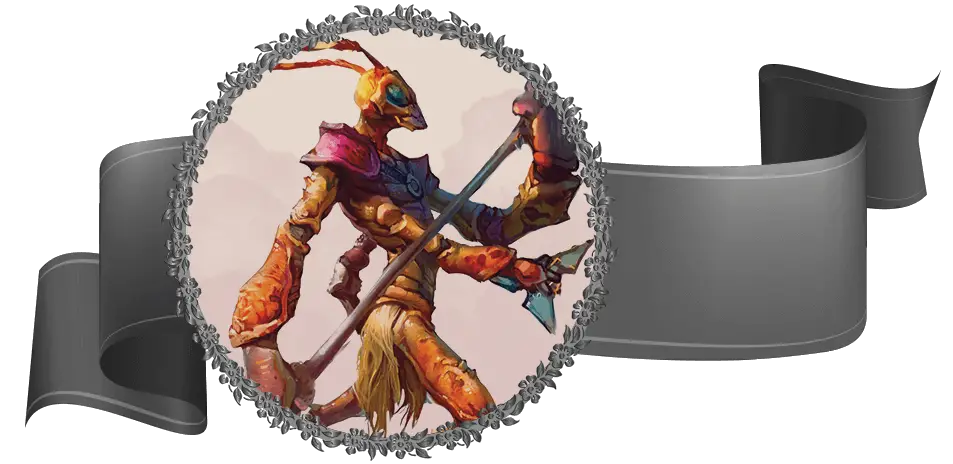
Racial Traits: Monstrosity creature type, medium or small size, Chameleon Carapace, Darkvision, Secondary Arms, Sleepless, and Thri-kreen Telepathy
From Spelljammer: Adventures in Space, this is an excitingly innovative race. They can camouflage and protect themselves with their carapace, effectively having Mage Armor all the time. The extra pair of arms is intriguing, enabling several types of builds that would normally be limited by two hands. Having four hands is fantastic!
They’re a race that is limited by speech, but their telepathy can help overcome that. The game is also embracing sign language, which could be helpful for Thri-kreen characters. Thri-kreen player characters can also remain conscious during rests.
Tiefling
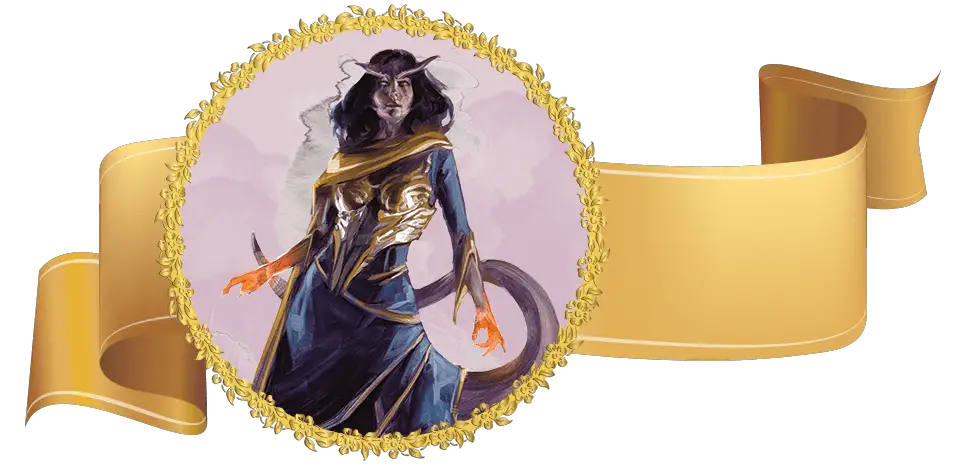
Racial Traits: Charisma +2, Intelligence +1, medium-size, Darkvision, Hellish Resistance, Infernal Legacy, subraces are more complicated for Tieflings compared to other races with subraces
Half-humans bearing fiendish ancestry, Tieflings are outsiders and counterparts to celestial Aasimars. Cunning and seductive, deceiving and inspiring, a Tiefling possesses many alluring characteristics from its nuanced nature. Depending on their bloodline, the appearance of a Tiefling could be mild or extreme, including horns, tails, pointed teeth, and solid-colored eyes of white, red, black, silver, or gold, and sometimes a sulfurous stink, cloven hooves, and an aura of displeasure.
While not all Tieflings tend toward evil, their self-governing nature tends to push them toward chaotic alignments. Aging the same as Humans, Tieflings benefit from their demonic heritage by gaining Darkvision and resistance to fire damage, as well as comprehension of the Infernal language.
Tieflings that share their bloodline with Asmodeus (per the Player’s Handbook) gain the Thaumaturgy cantrip, Hellish Rebuke, and Darkness. Baalzebul descendants (Mordenkainen’s Tome of Foes) are quicker to corrupt physically and psychically and gain a few spells to display their proclivities to madness.
From this same manual, the Bloodline of Dispater Tieflings tend to make superior spies and gain spells that accommodate this task. Bloodline of Fierna Tieflings are strong in their personality and tend to manipulate others easily, gaining spells that sway public opinion. Bloodline of Glasya provides criminal masterminds savvy for heists with spells like Minor Illusion and Disguise Self.
The Bloodline of Levistus comes from Stygia, a frozen sea of icebergs in the Nine Hells. Of this lineage, Tieflings gain cold-adjacent spells like Ray of Frost and Armor of Agathys. Tieflings of the Bloodline of Mammon value coins and wealth, gaining spells like Mage Hand, Floating Disk, and Arcane Lock. The Bloodline of Mephistopheles gains arcane powers, and the Bloodline of Zariel is adept in battle with helpful spells.
From Sword Coast Adventurer’s Guide, Tieflings can choose variant rules such as varying appearance and one of the following options: spellcasting to showcase your unfettered fiendish wit, fire-based spells to accentuate your hellish heritage or wings that enable unarmored flying. All of these options from the various manuals give a spark to the idea of playing a brooding or complex half-fiend, along with fantastic spellcasting and adept abilities to boot.
Tiefling Subraces:
Here is what Mordenkainen’s Tome of Foes says about Tielfing subraces: “If your tiefling has a subrace, choose one of the following options- whichever one corresponds to the infernal being connected to the tiefling’s family. The traits of the chosen subrace replace the tiefling’s Ability Score Increase and Infernal Legacy traits given in the Player’s Handbook. There is one exception: tieflings connected to Asmodeus. Those tieflings use the traits in the Player’s Handbook.”
- Asmodeus (MToF) AKA the PHB Tiefling: See ‘Racial Traits’ above for the basic race.
- Baalzebul (MToF): Charisma +2, Intelligence +1, Legacy of Maladomini
- Dispater (MToF): Charisma +2, Dexterity +1, Legacy of Dis
- Fierna (MToF): Charisma +2, Wisdom +1, Legacy of Phlegethos
- Glasya (MToF): Charisma +2, Dexterity +1, Legacy of Malbolge
- Levistus (MToF): Charisma +2, Constitution +1, Legacy of Stygia
- Mammon (MToF): Charisma +2, Intelligence +1, Legacy of Minauros
- Mephistopheles (MToF): Charisma +2, Intelligence +1, Legacy of Cania
- Zariel (MToF): Charisma +2, Strength +1, Legacy of Avernus
Racial Feats for Tieflings:
If you choose this race, consider looking at feats specifically designed for Tieflings, such as Flames of Phlegethos or Infernal Constitution from Xanathar’s Guide to Everything.
Flutes’ Lineage Analysis: Tiefling
I thought Tieflings were kinda cool and very aesthetic (so much fan art), but Mordenkainen’s Tome of Foes changed that. They have so many subraces (bloodlines) available. They’re not just for cosplaying anymore!
It’s interesting to look at specific lineages for a Tiefling character and analyze the different skills and spells they can gain. The lore that comes along with the bloodline progenitors is helpful, too. Tiefling is a race that has aged very well!
Tortle
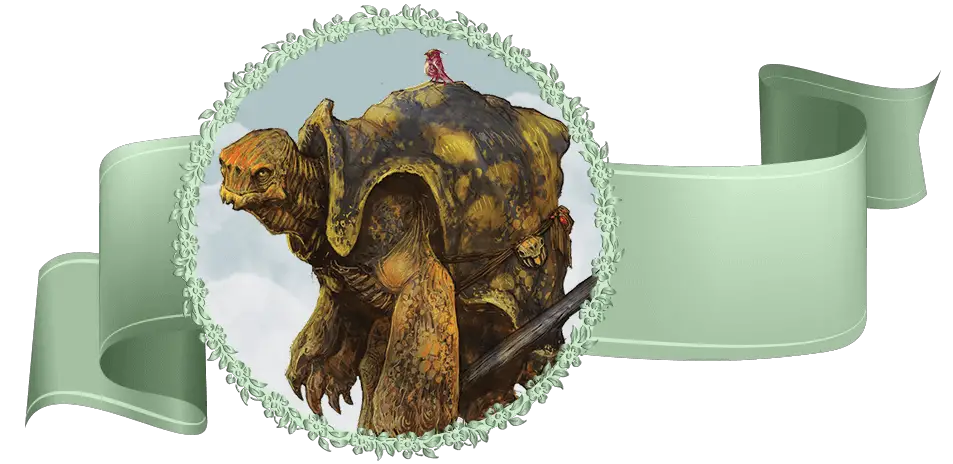
Racial Traits: Strength +2, Wisdom +1, medium or small size, Claws, Hold Breath, Natural Armor, Shell Defense, Nature’s Intuition
A player can find the updated stats for the Tortle in Mordenkainen Presents: Monsters of the Multiverse.
Intelligent and daring, Tortles are nomadic leathery reptile humanoids donning armor-like shells on their backs, which double as a home away from home. Tortles find beauty in the ordinary and are eager to explore cultures and customs. Quick to befriend other wanderers and excited to share their survival skills, Tortles live in order and adhere to ritual. In their customs and routines, they quickly set the trajectory of their lives and settle into specific ways of living, true to their typical lawful good nature.
Though unable to swim easily, Tortles can hold their breath for short bursts, and their natural armor allows them a high natural AC and additional protections. Familiar with the Aquan language, Tortles make for fantastic exotic travelers.
A player can find the Tortle race in the Tortle Package on DMs Guild.
Flutes’ Lineage Analysis: Tortle
This charming race has impressive defenses. Its base AC is 17 before putting on a shield, but armor isn’t an option. It can also withdraw to bunker down, and I like to think hijinx could take place to use the Tortle like a green koopa shell with a little teamwork.
They live slightly longer than Aarakocra, which isn’t long at only fifty years. This surprised me since turtles are known for longer lifespans (not all of them, apparently).
Triton
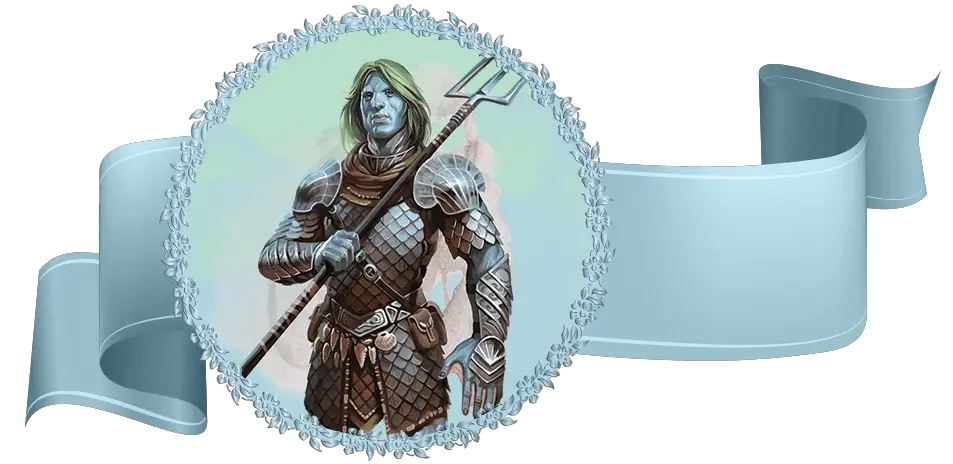
Racial Traits: Strength +1, Constitution +1, Charisma +1, medium-size, Amphibious, Control Air and Water, Emissary of the Sea, Guardians of the Depths
A player can find the updated stats for the Triton in Mordenkainen Presents: Monsters of the Multiverse.
Guardians of the oceans and allies to the Elemental Plane of Water, Tritons are noble and typically lawful good as they seek order and peace. Volo’s Guide to Monsters explains that Tritons are amphibious to land and sea, capable of breathing in both underwater and the air. Tritons were republished in Mythic Odysseys of Theros.
With dorsal fins around their calves and eyes as brilliant as sea glass, Tridents are proud and protective and believe they deserve the utmost respect from other races. Ready to sacrifice themselves to protect others, Tritons can control small elements of the weather and water. With the ability to communicate with beasts of the sea, Tritons can speak Primordial and are adapted to cold-water living and resist cold damage.
Flutes’ Lineage Analysis: Triton
The Triton possesses some of the best racial spellcasting in the game (Fog Cloud, Gust of Wind, Wall of Water). It was also part of errata to clarify that they could cast each spell once with the feature (instead of only casting one and done).
Though the Triton feature Emissary of the Sea says it only works on beasts that breathe water, it’s reasonable to allow this feature to apply to aquatic beasts who don’t technically breathe. However, that’s up to your DM.
I tend to run games with water encounters, so Tritons are more appealing to me. Most players seemingly dismiss aquatic features because they don’t think they’re useful (or at least that’s my perception). You don’t need to be playing an aquatic campaign to enjoy playing a Triton. Breathing water and using a swim speed can open up new areas for exploration, but it can also save your life.
Triton’s gained a second boost from the Volo’s errata since it gave them darkvision. This makes sense if they’re from the deep ocean and lack blindsense. You also get cold resistance! This is one of the best resistances to have because it also makes you immune to extreme cold if you’re on a high mountain or windy tundra. Tritons make fantastic characters in and out of the sea!
Vedalken
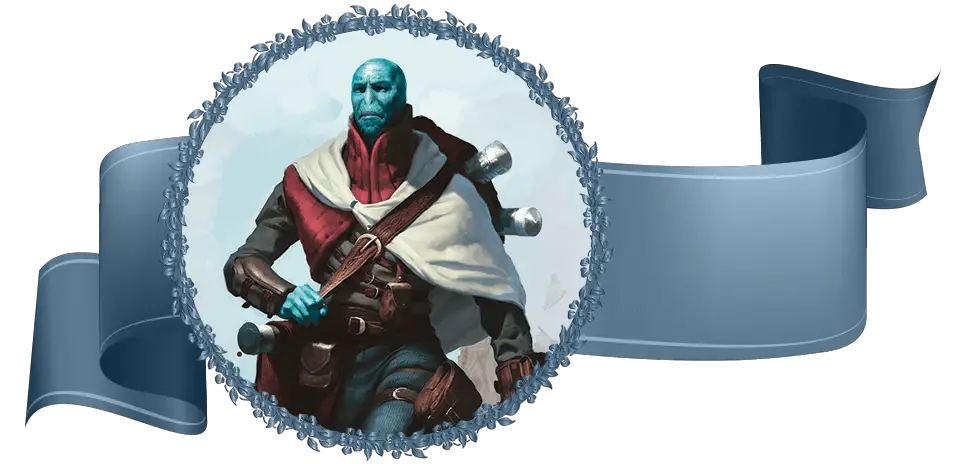
Racial Traits: Intelligence +2, Wisdom +1, medium-sized, Vedalken Dispassion, Tireless Precision, Partially Amphibious
From Guildmaster’s Guide to Ravnica.
(more lore and commentary coming soon)
Verdan
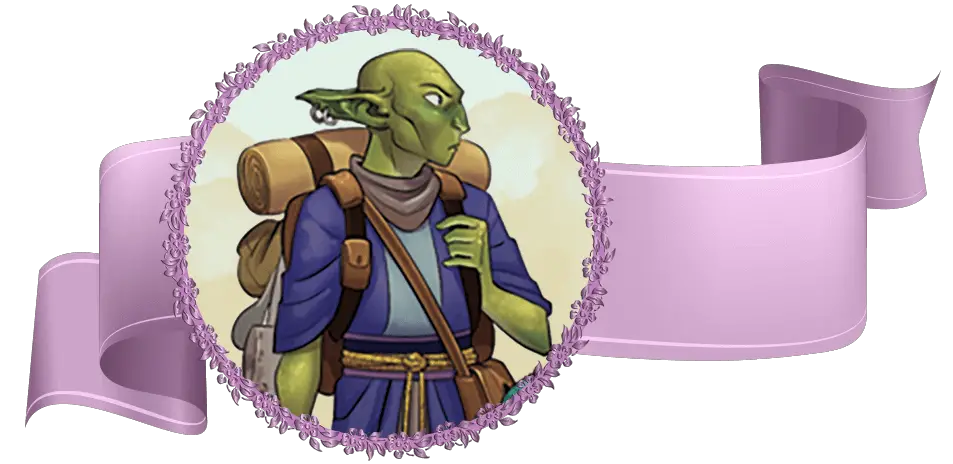
Racial Traits: Constitution +1, Charisma +2, medium-to-small size, Black Blood Healing, Limited Telepathy, Persuasive, Telepathic Insight
Mutated goblinoids with unique physical malformations, Verdan are fluid in personality and quick to empathize with those they familiarize with. Curious and sometimes gullible, Verdan lack a collective history and constantly travel and adapt. Transformed by That-Which-Endures, they are the most recently created humanoid race of Faerun.
Starting at size 3 feet then exploding an additional 2 feet at 5th level, Verdan speculatively live up to 200 years, though none have died of old age as of yet. With abilities to reroll failed Hit Die, telepathy limitedly, and a trustworthy nature, this goblin-hybrid race is quick to shine.
Players can find the stats for the Verdan race in the Acquisitions Incorporated Sourcebook.
Flutes’ Lineage Analysis: Verdan
Verdans have some cool telepathic features for communication and defense, but I’m not familiar with them. I like that they have reliable Hit Dice healing since Hit Dice are an underutilized 5e game mechanic in my opinion. This race seems fine, but it’s forgotten since it was published in a less-popular book.
Viashino
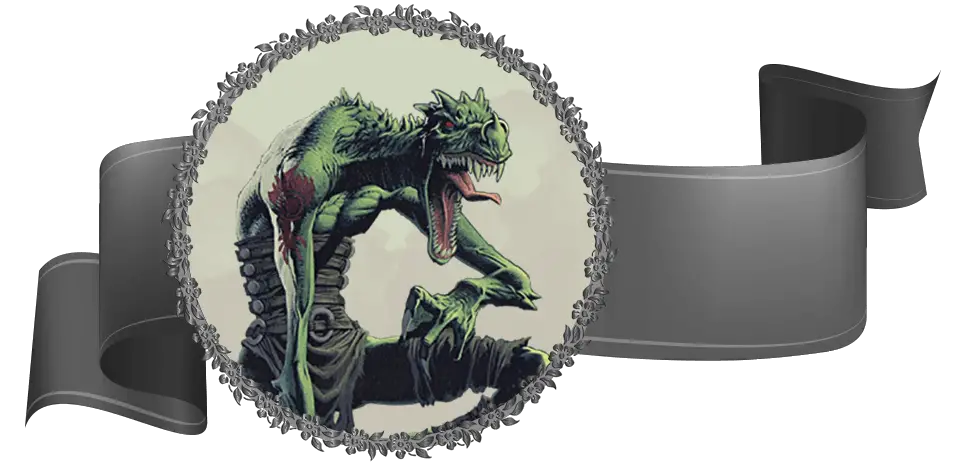
Racial Traits: Dexterity +2, Strength +1, medium-sized, Bite, Lashing Tail, Wiry Frame
From Races of Ravnica Unearthed Arcana but wasn’t published officially.
(more lore and commentary coming soon)
Warforged
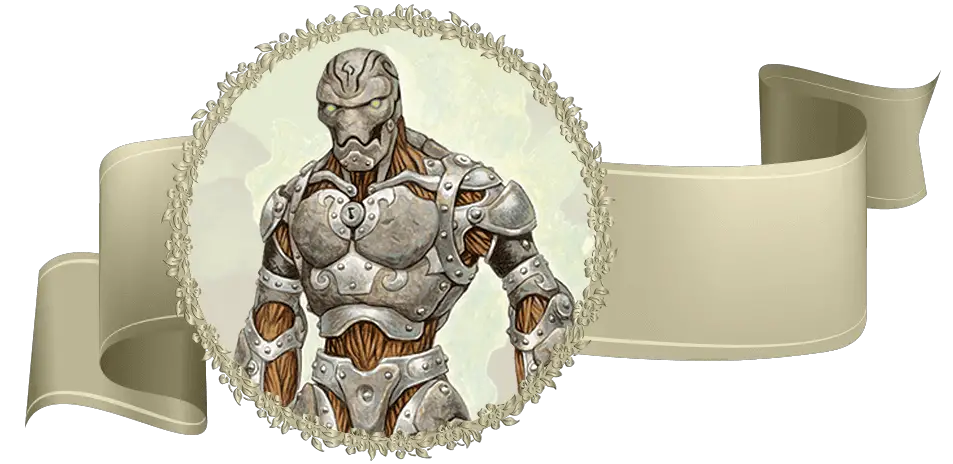
Racial Traits: Constitution +2, +1 to ability score of your choice, medium-size, Constructed Resilience, Sentry’s Rest, Integrated Protection, Specialized Design
Warforged were created as weapons in a war that no longer wages, leaving them wandering as they seek for purpose in the world. They are composed of living wood and stone, and they have no inherent gender (some choose to adopt one). Being constructed as they are, the Warforged need no sleep, water, food, or air. They must still rest in a motionless state.
Each Warforged was previously called by a numerical title, but now they adopt nicknames or choose new names entirely. They’re also identified by the unique Ghulra mark on their foreheads (the symbols etched above their face). Warforged are likely to modify their bodies as they explore their new-found individuality.
Some Warforged can be as young as two years old, while others could be up to thirty. They have no physical development from infancy since they’re created as adults, so a two-year-old Warforged can still be trying to figure out how the world works. For this reason, Warforged can make for fun fish-out-of-water storytelling as they seek to understand the world and its people.
The Warforged race comes to us from the Eberron setting.
Flutes’ Lineage Analysis: Warforged
The Warforged are one of my top favorite lineages of all time. They were included in early playtest material for 5e, and I adored them. Now they’re even stronger after their publication in ERftLW! This is a rich race with plenty of opportunities for world/character building. I highly recommend checking them out.
Yuan-ti (formerly Pureblood)
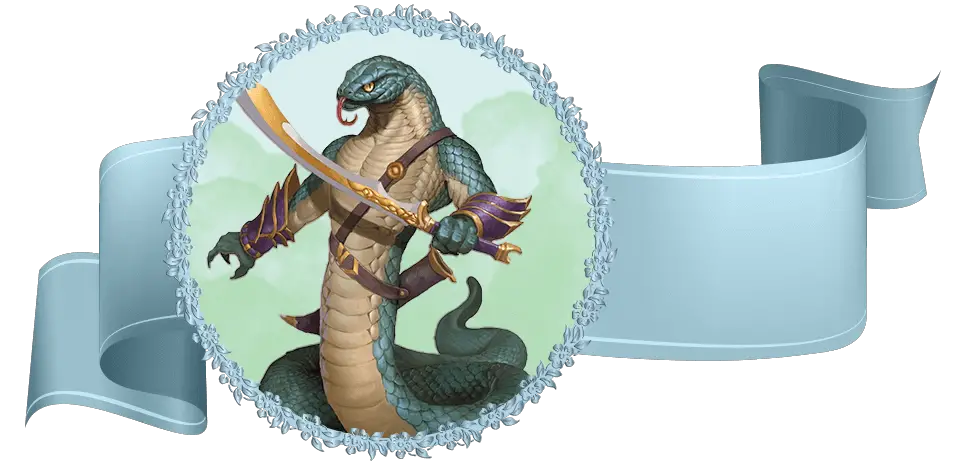
Charisma +2, Intelligence +1, medium-size, Darkvision, Serpentine Spellcasting, Magic Resistance, Poison Resilience
A player can find the updated stats for the Yuan-ti in Mordenkainen Presents: Monsters of the Multiverse.
Highly intelligent psionic serpentfolk, the Yuan-Ti race attracts players with their tight-knit societies as “favored ones” to their serpentine deities, who have charged the race with the destruction of the world. Preferring manipulation over disputation, whispers to war, the Yuan-Ti are a subtle race entangled with subterfuge and ritual. Preferring to engage in espionage, often hiding their serpent heritage, Yuan-Ti range from Pureblood to Abominations, the more human-like, enabled to infiltrate societies.
Though typically denoted as devoid of emotion, Yuan-Ti are united by their rigorous fidelity to their goals and are typically neutral evil for this reason. With Darkvision abilities and inherent spellcasting apropos to their snake-nature, Yuan-Ti are resistant to magical effects, spells, and immune to being poisoned. They are also well-versed in Abyssal and Draconic. Stats for the Yuan-Ti can be found in Volo’s Guide to Monsters.
Flutes’ Lineage Analysis: Yuan-Ti
The Yuan-Ti Pureblood is one of the most interesting races I’ve played. The emotionless, brutal nature of their lineage is incredibly interesting to play. Mine was an evil character in a non-evil party. It can be difficult to make that work if you’re a new player.
Characters of this race have strong racial features. Magic Resistance is premium, and poison immunity is very fun. I highly recommend this race if you want a roleplaying challenge with uniquely powerful features.
Please, please, please read all the lore that was redacted by WotC in the recent errata. Yuan-Ti are fascinating as evil characters, and I mean that in the sense that they don’t have the same morals as humans, basically. This race is so interesting, so don’t let the recent changes whitewash them into boring obscurity!
What Races Are Playable in D&D 5e?
- Aarakocra
- Aasimar
- Autognome
- Bugbear
- Centaur
- Changeling
- Custom Lineage
- Dhamphir
- Dragonborn
- Dwarf
- Elf
- Fairy
- Firbolg
- Genasi
- Giff
- Gith
- Gnome
- Goblin
- Goliath
- Grung
- Hadozee
- Half-Elf
- Half-Orc
- Halfling
- Harengon
- Hexblood
- Hobgoblin
- Human
- Kalashtar
- Kenku
- Kobold
- Leonin
- Lizardfolk
- Locathah
- Loxodon
- Minotaur
- Orc
- Owlin
- Plasmoid
- Reborn
- Satyr
- Shifter
- Simic Hybrid
- Tabaxi
- Thri-Kreen
- Tiefling
- Tortle
- Triton
- Vedalken
- Verdan
- Viashino
- Warforged
- Yuan-Ti

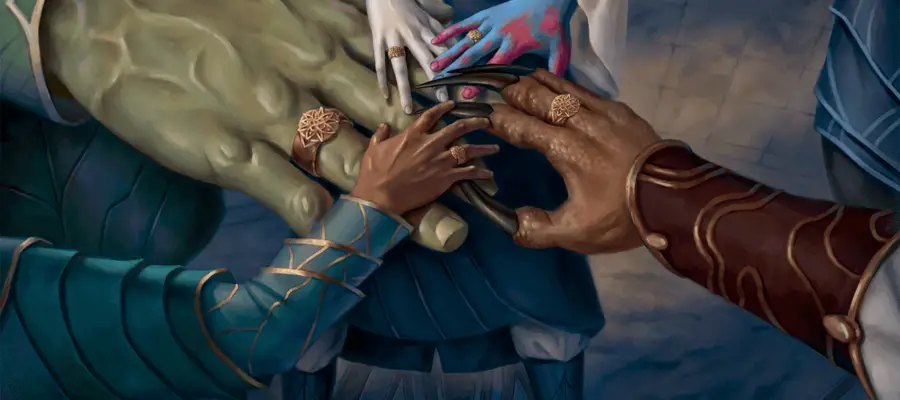


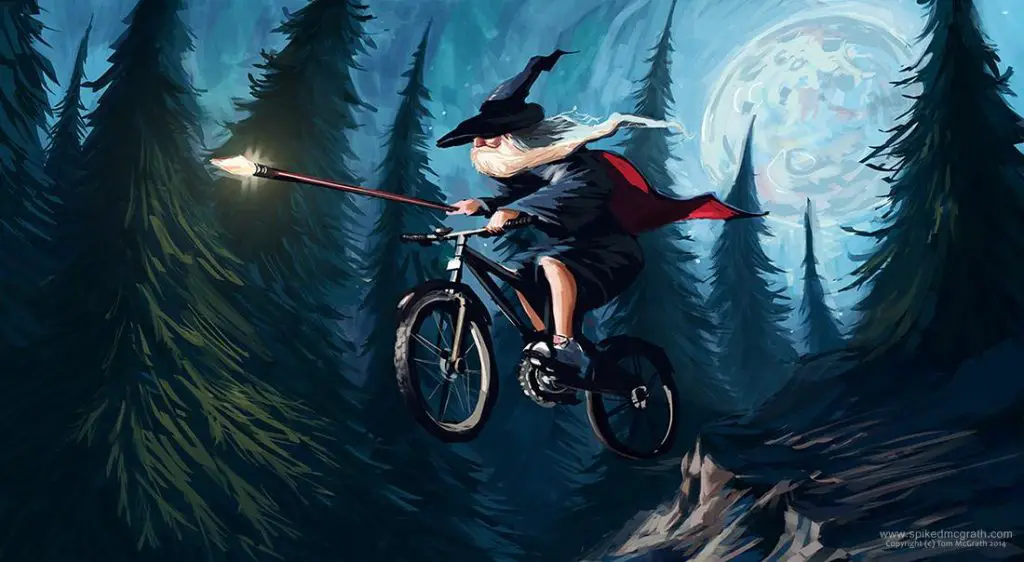
That is a comprehensive guide!
Added to the Blog Database.
https://jonbupp.wordpress.com/for-players/races/